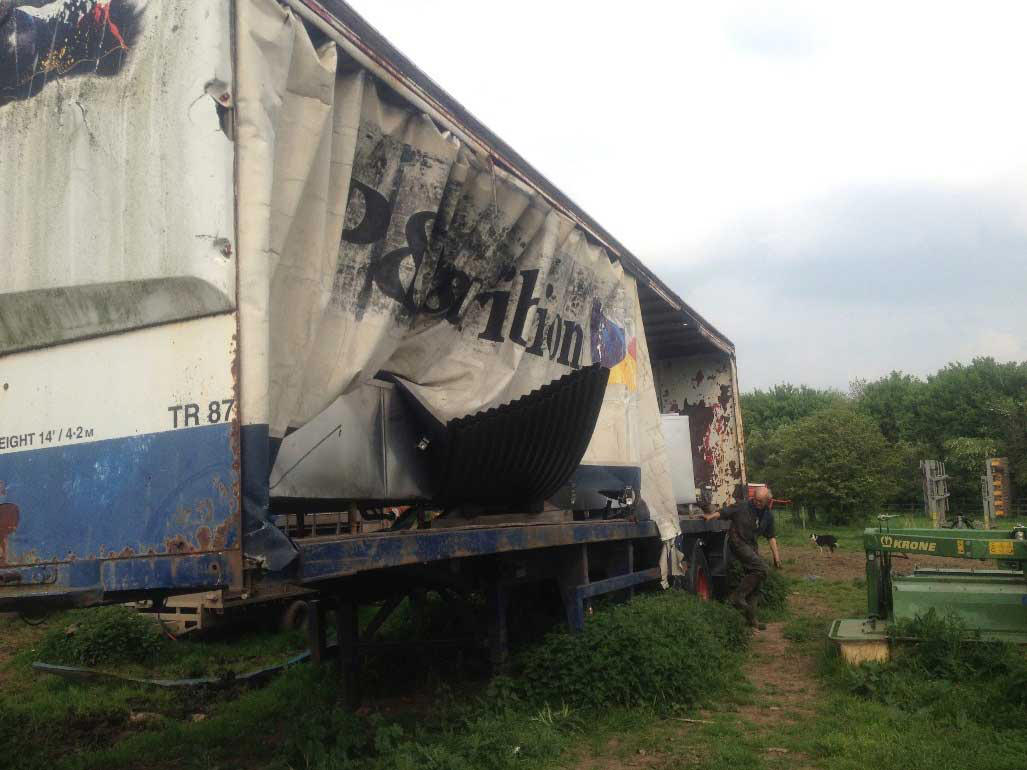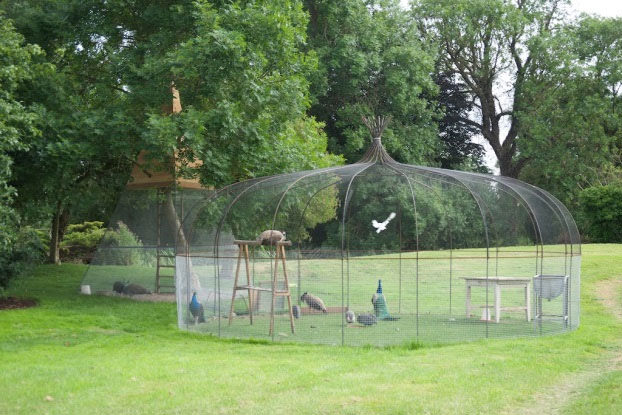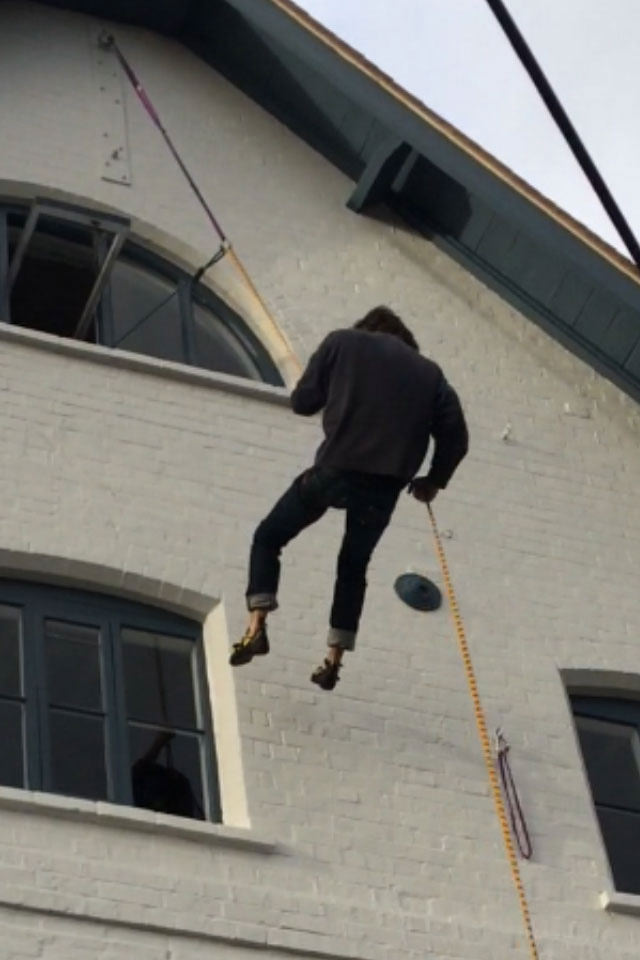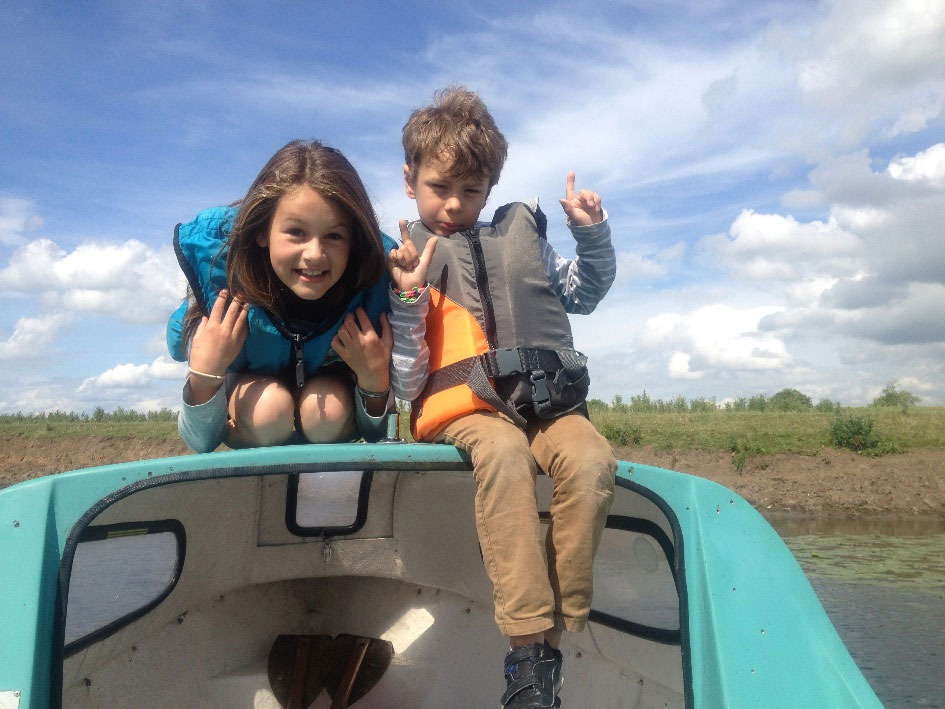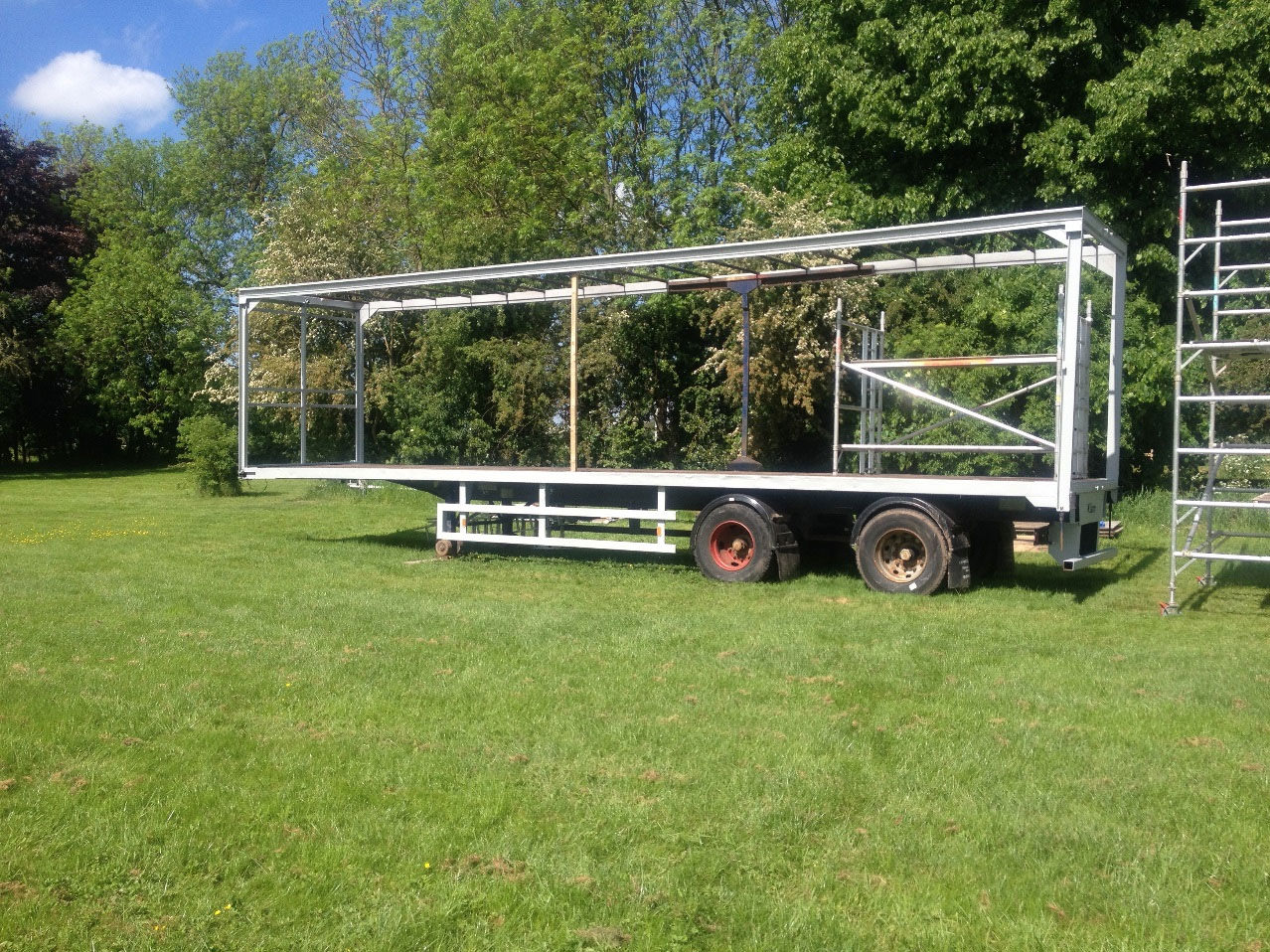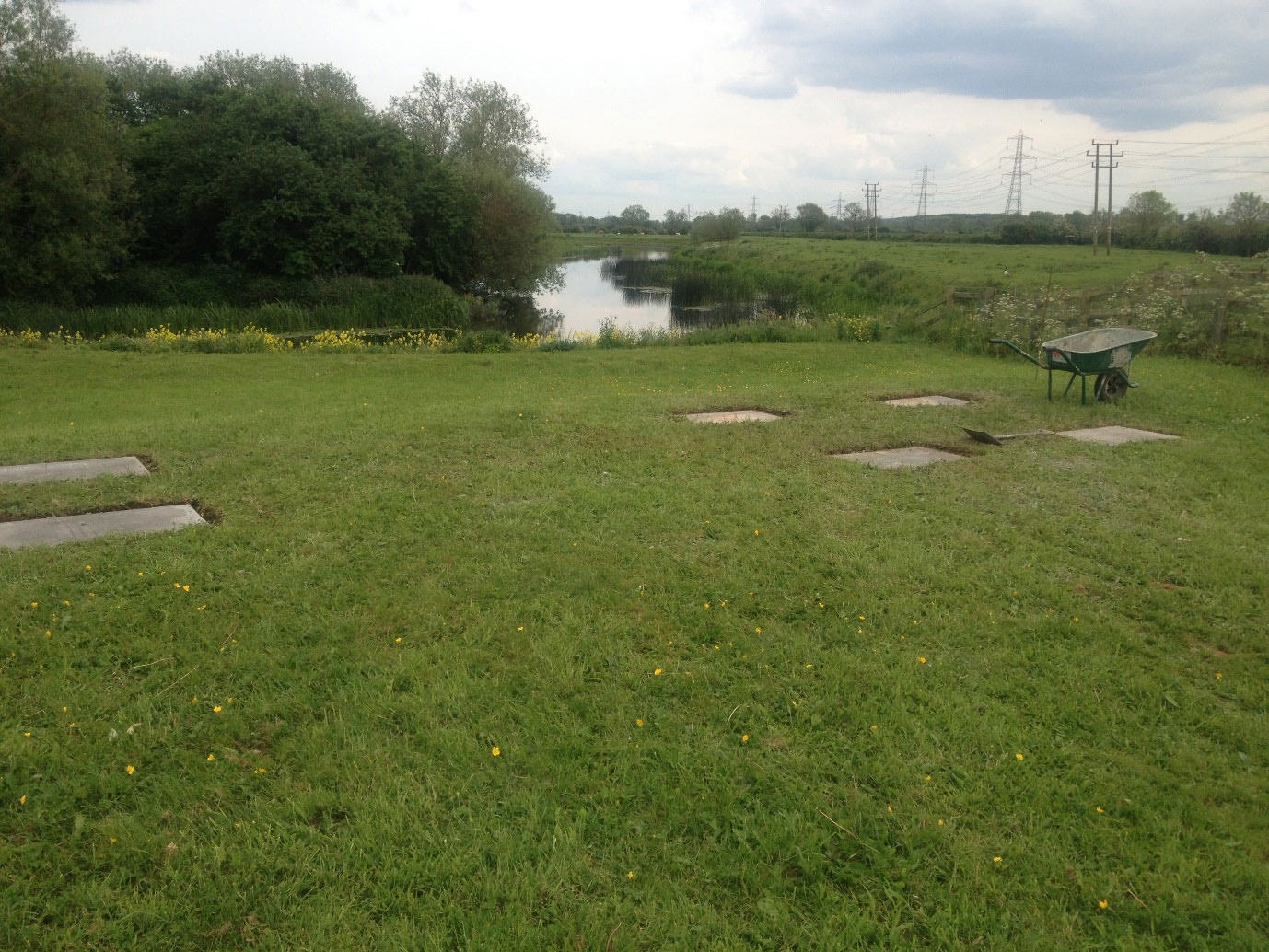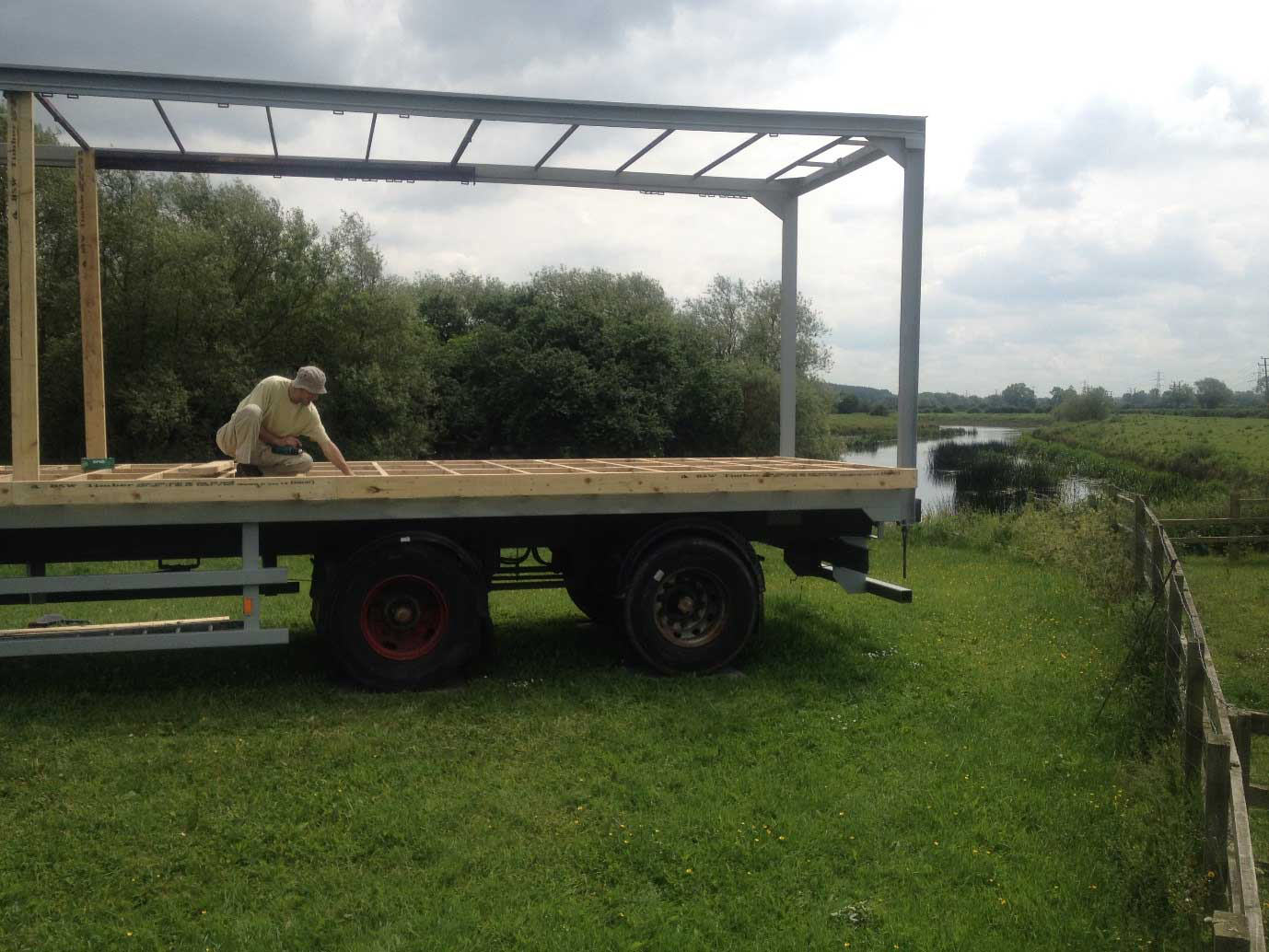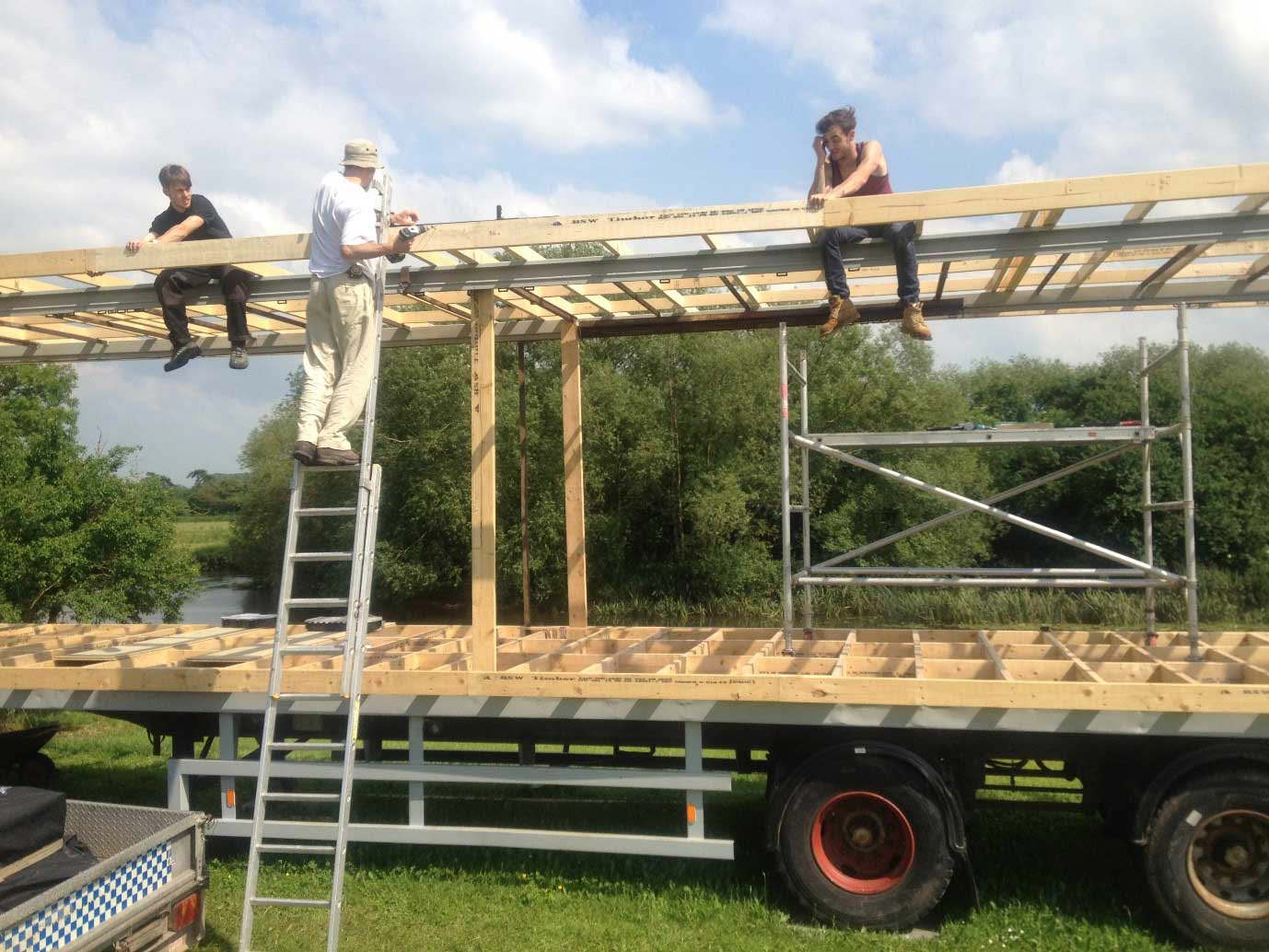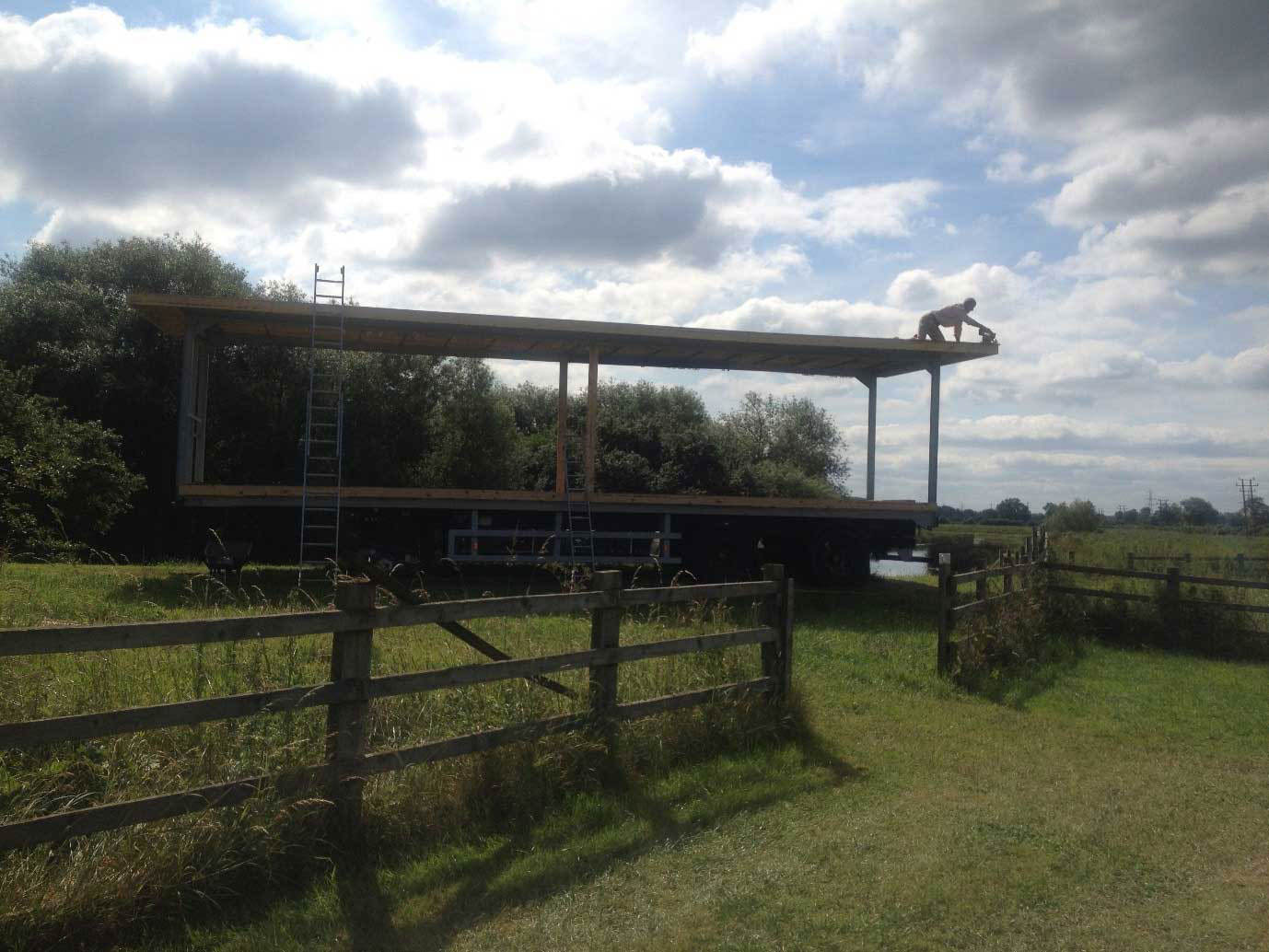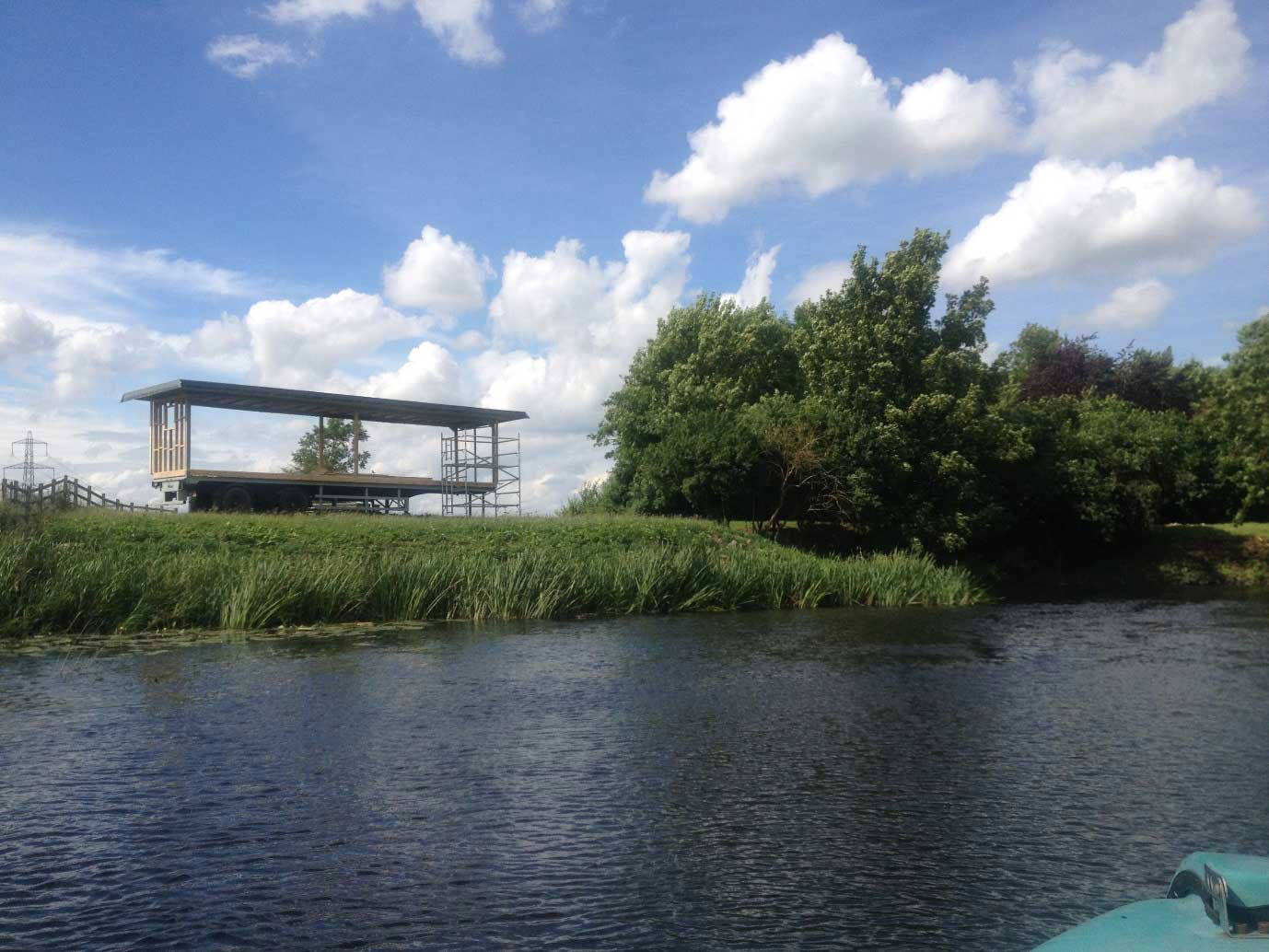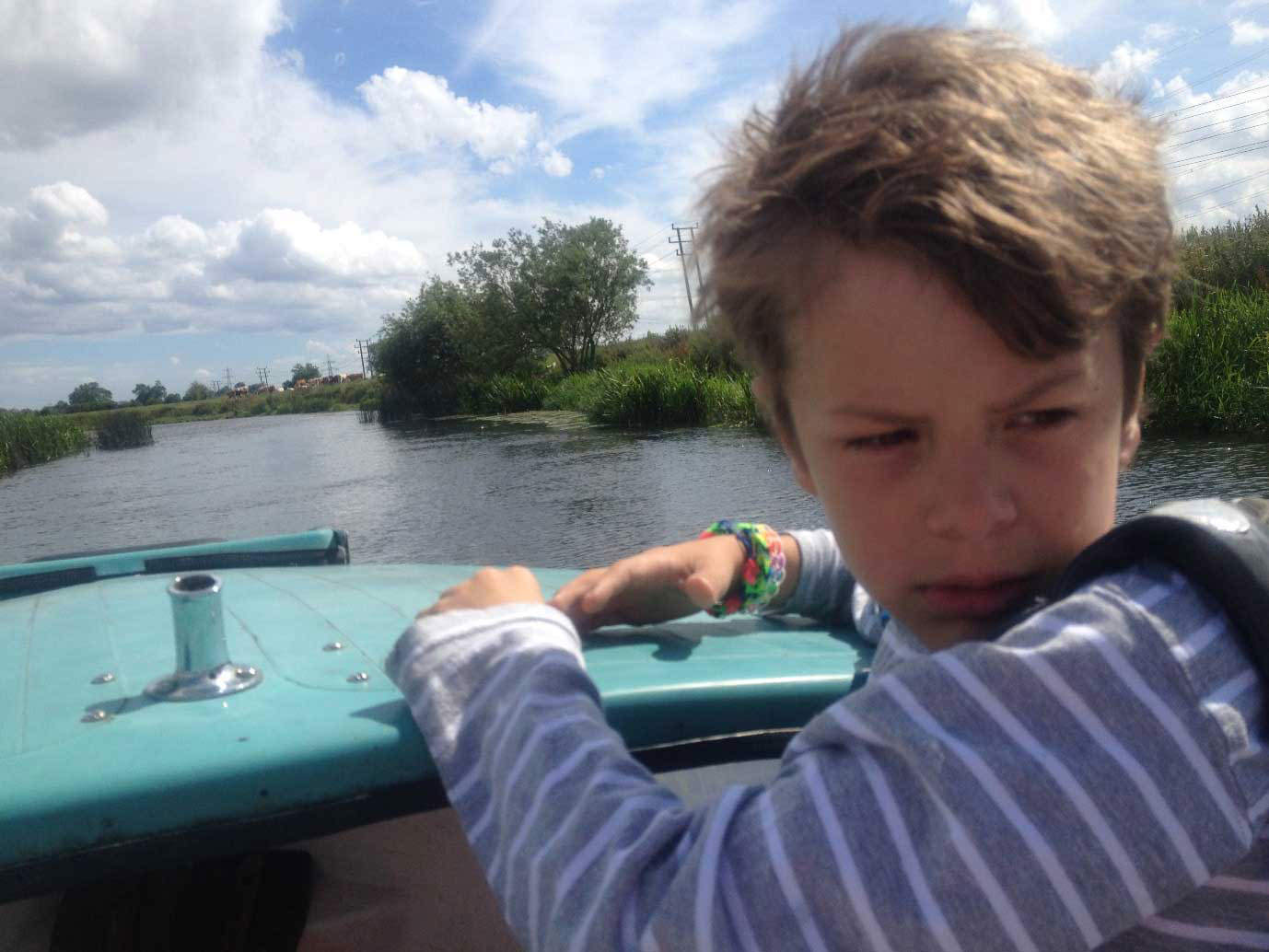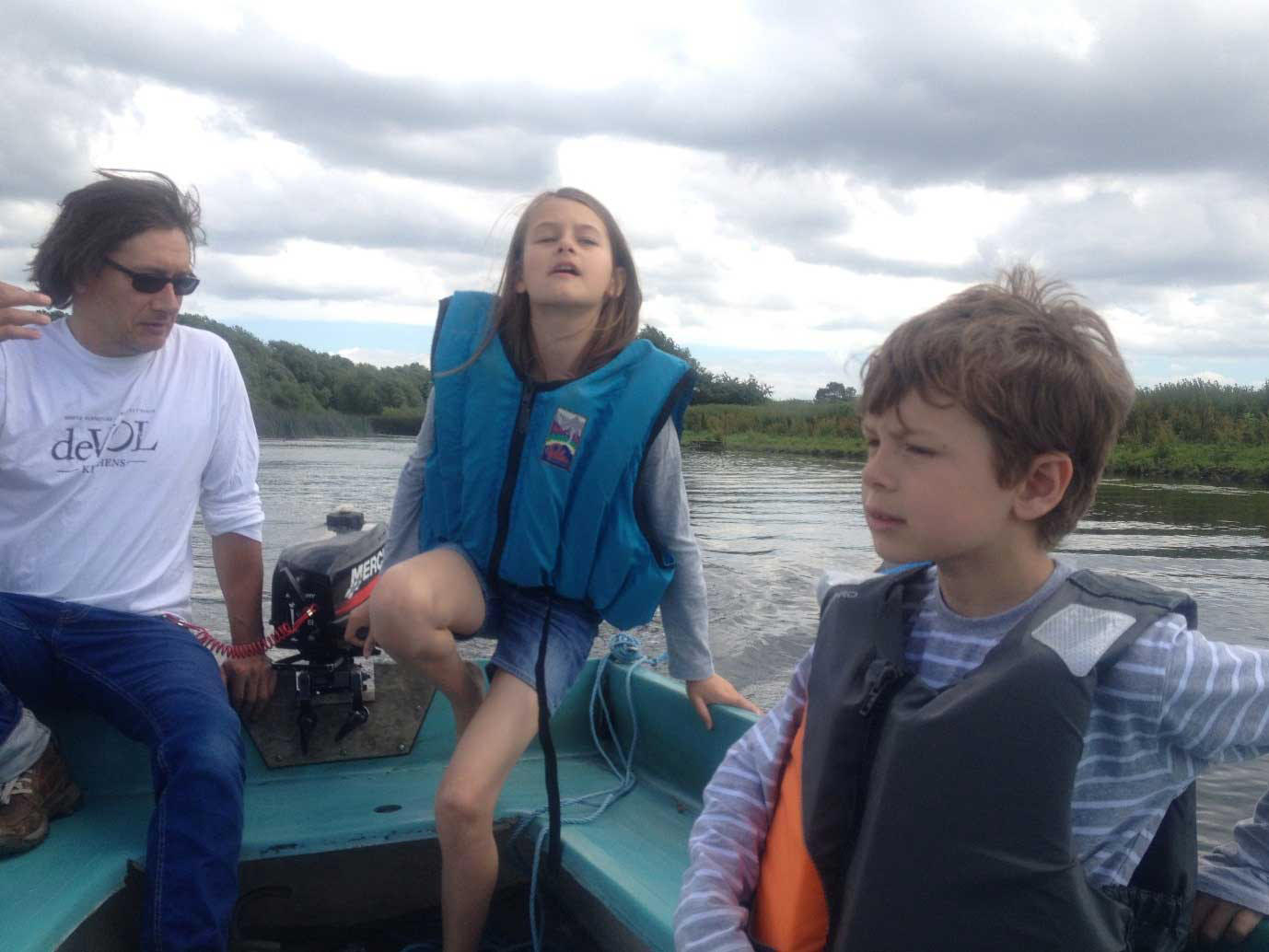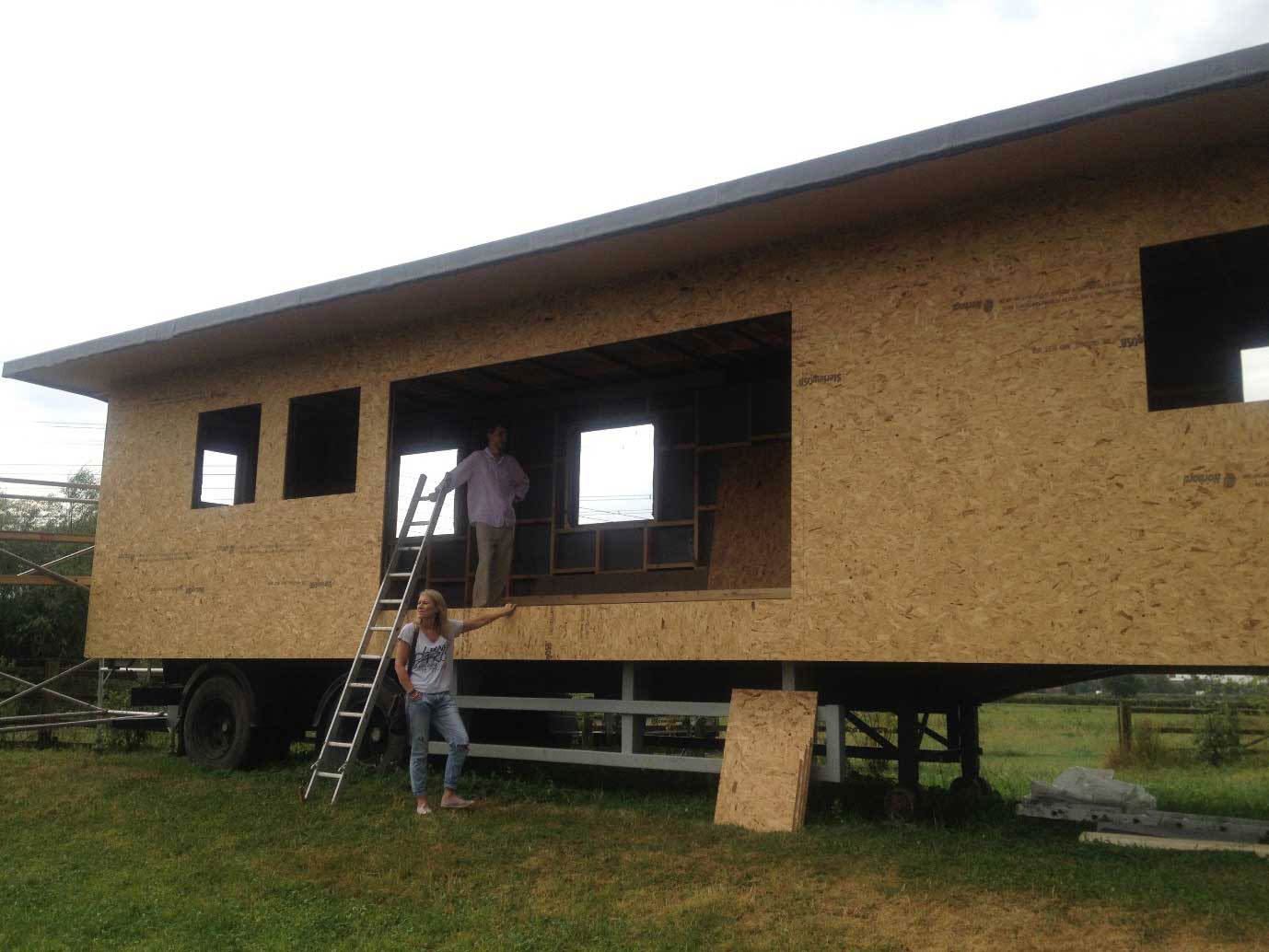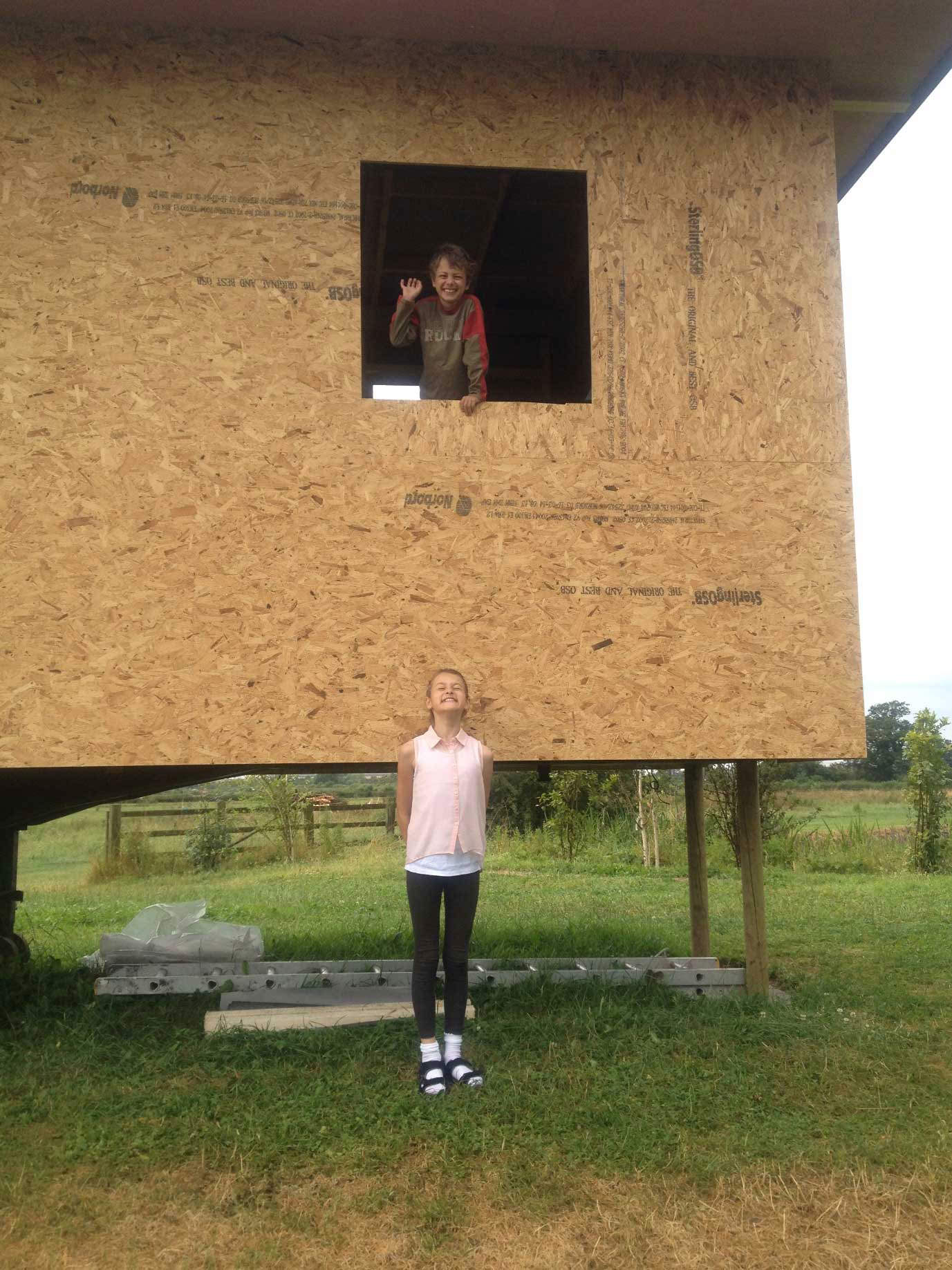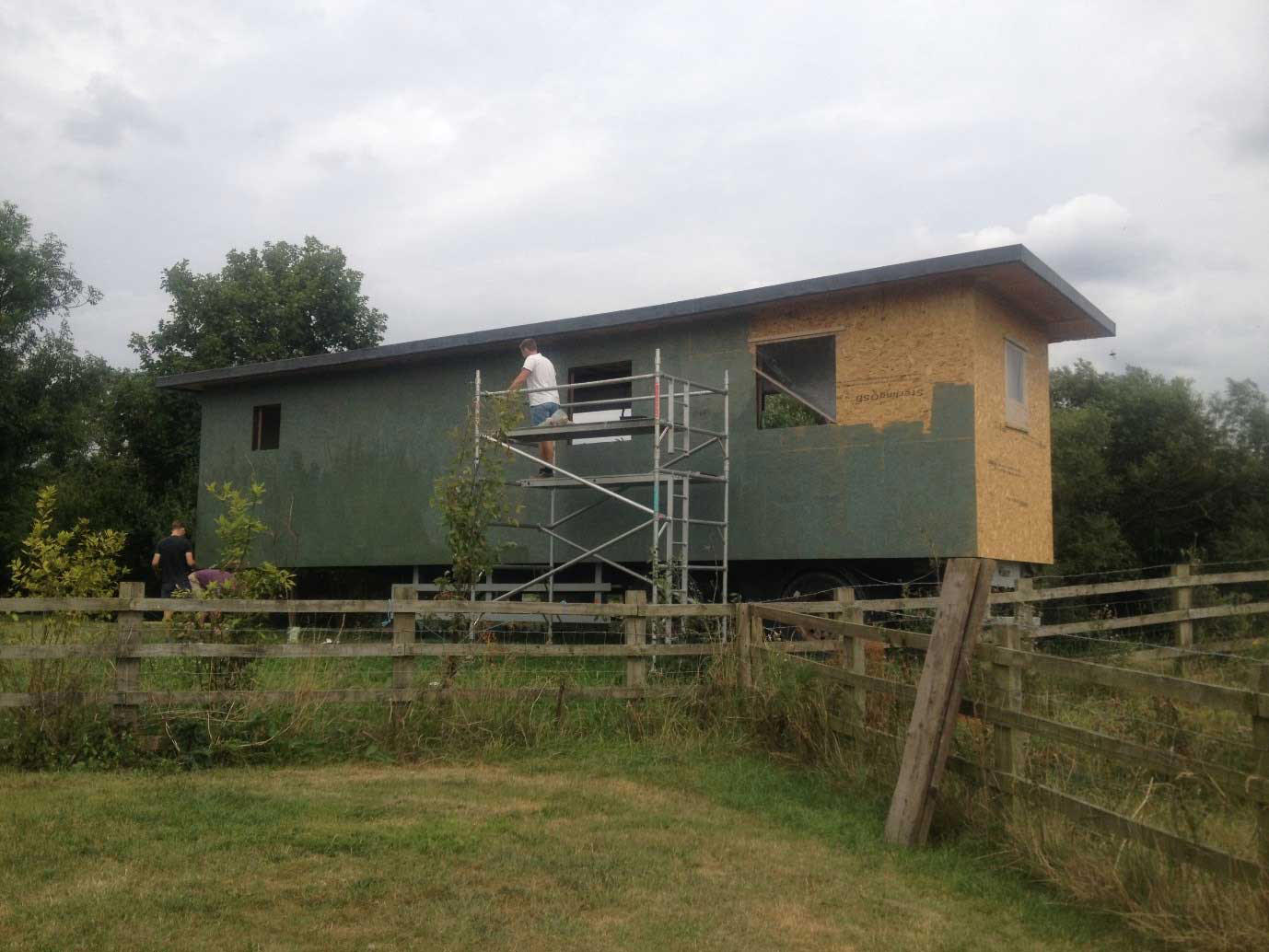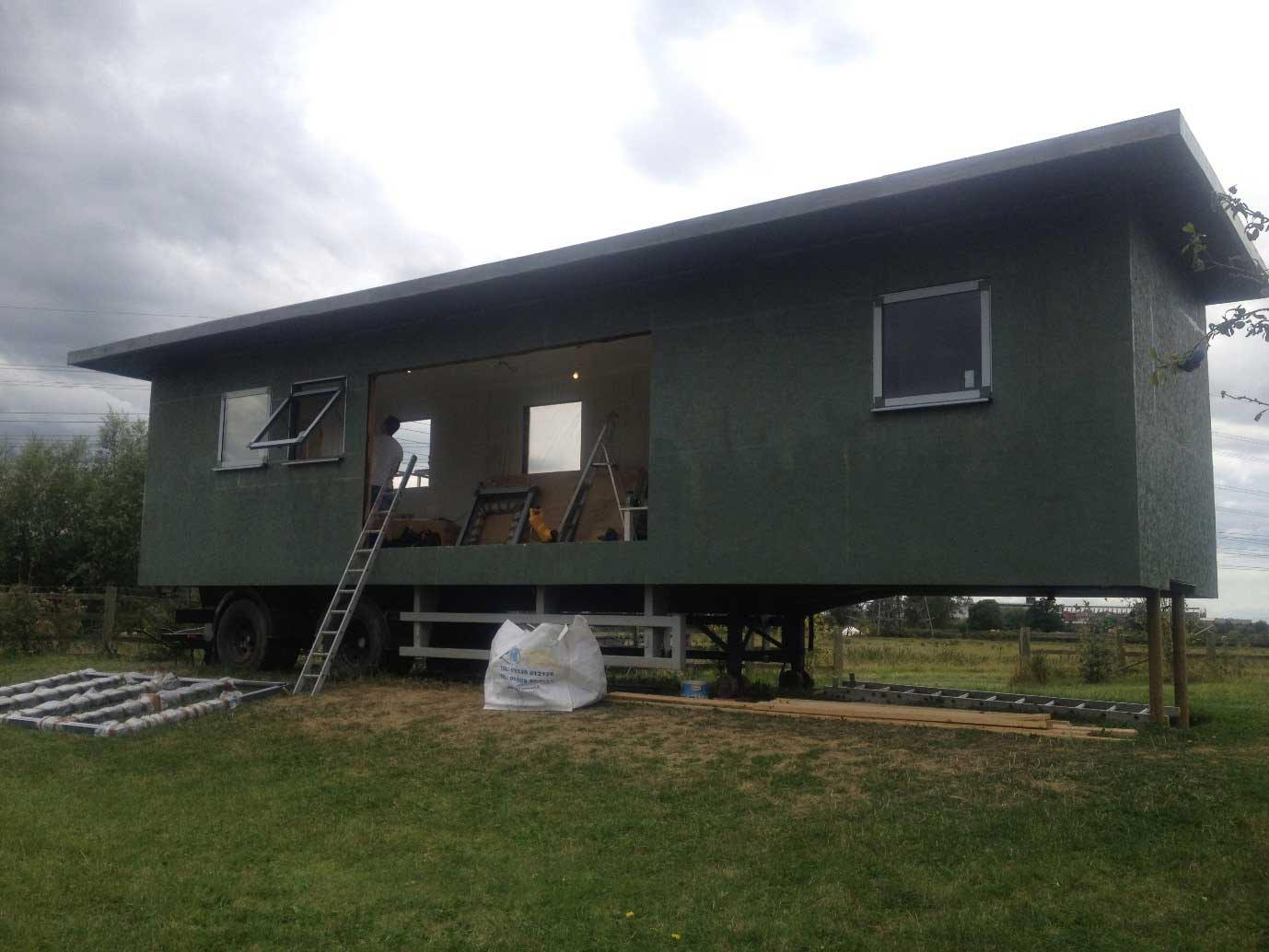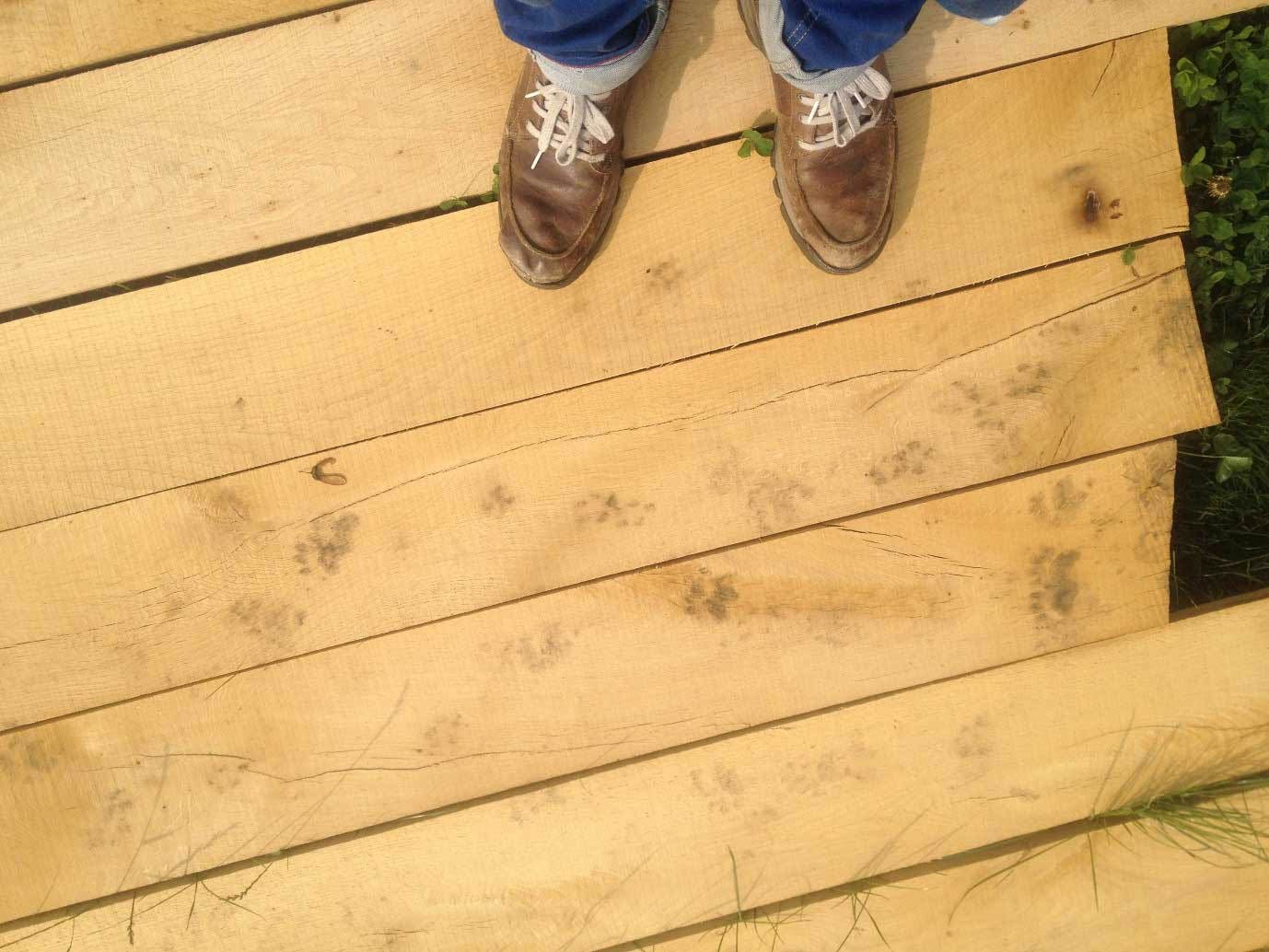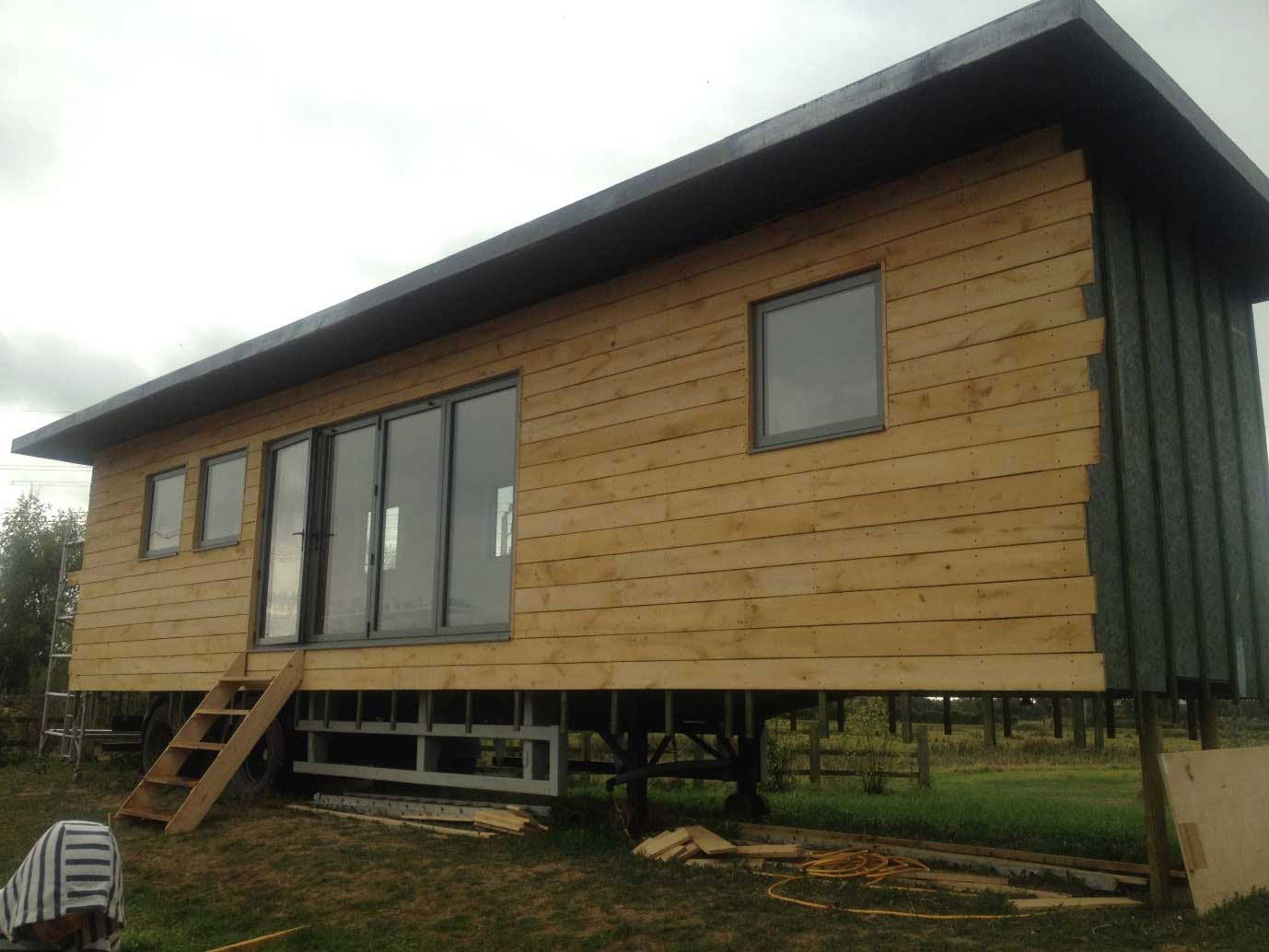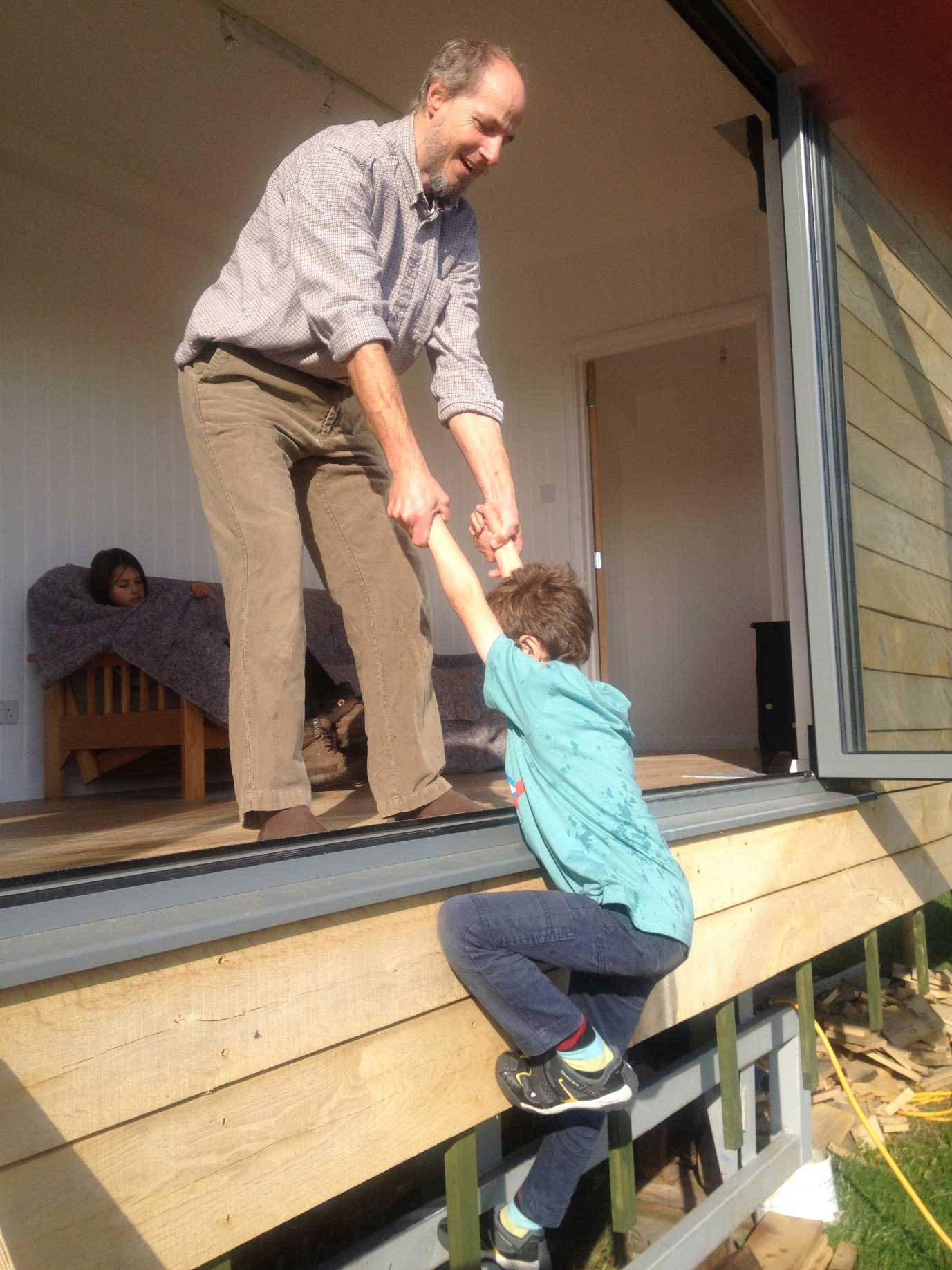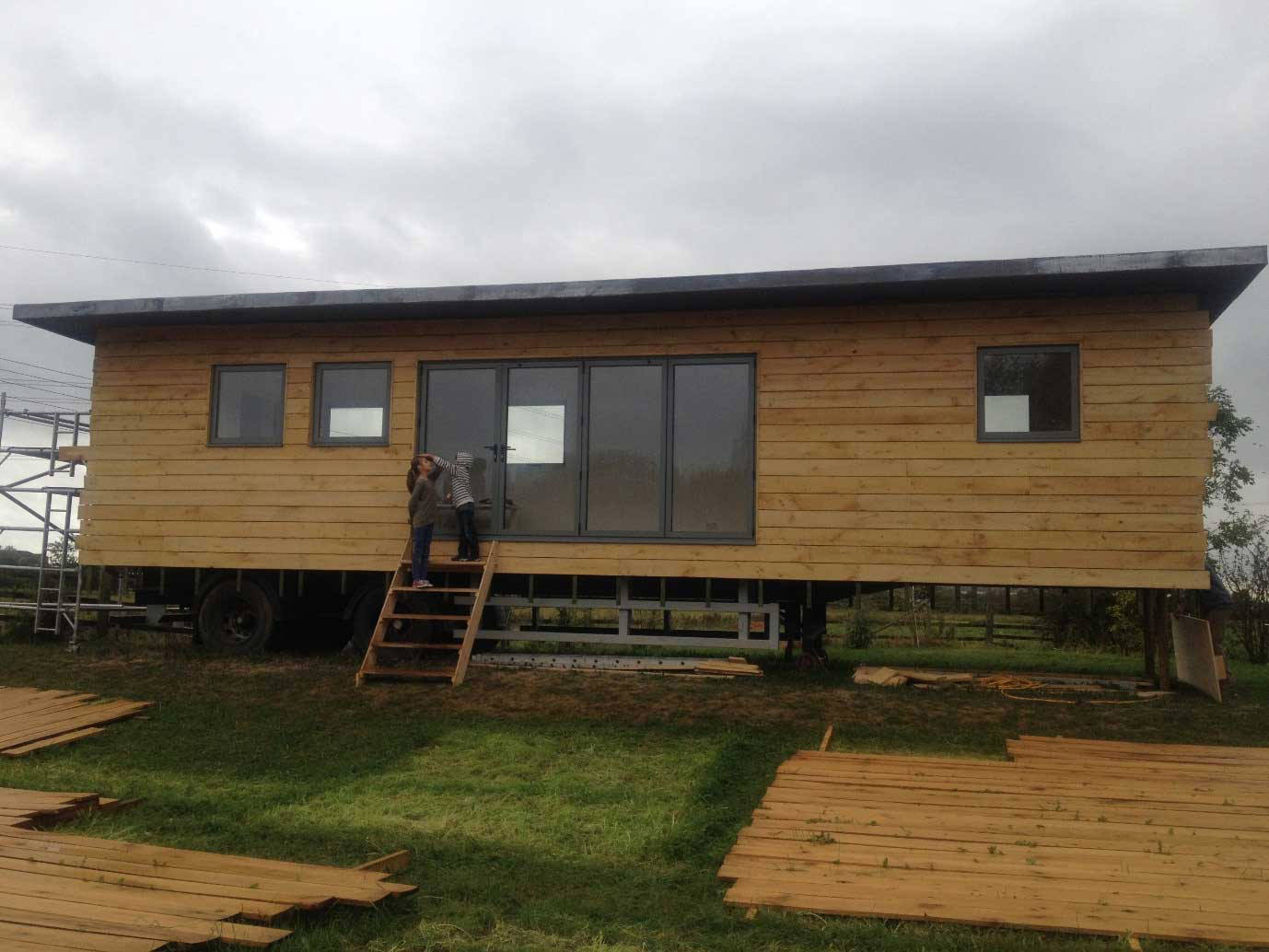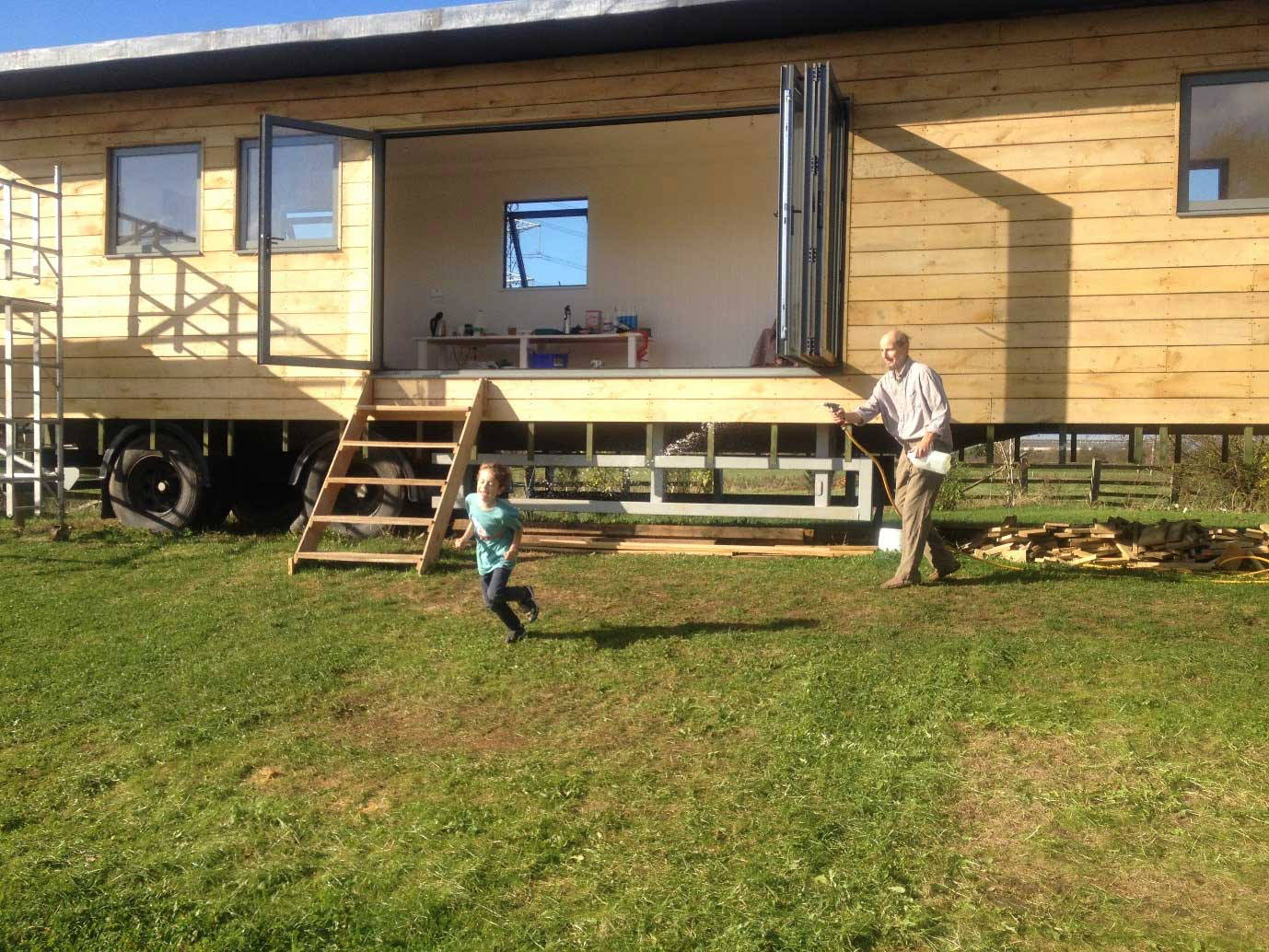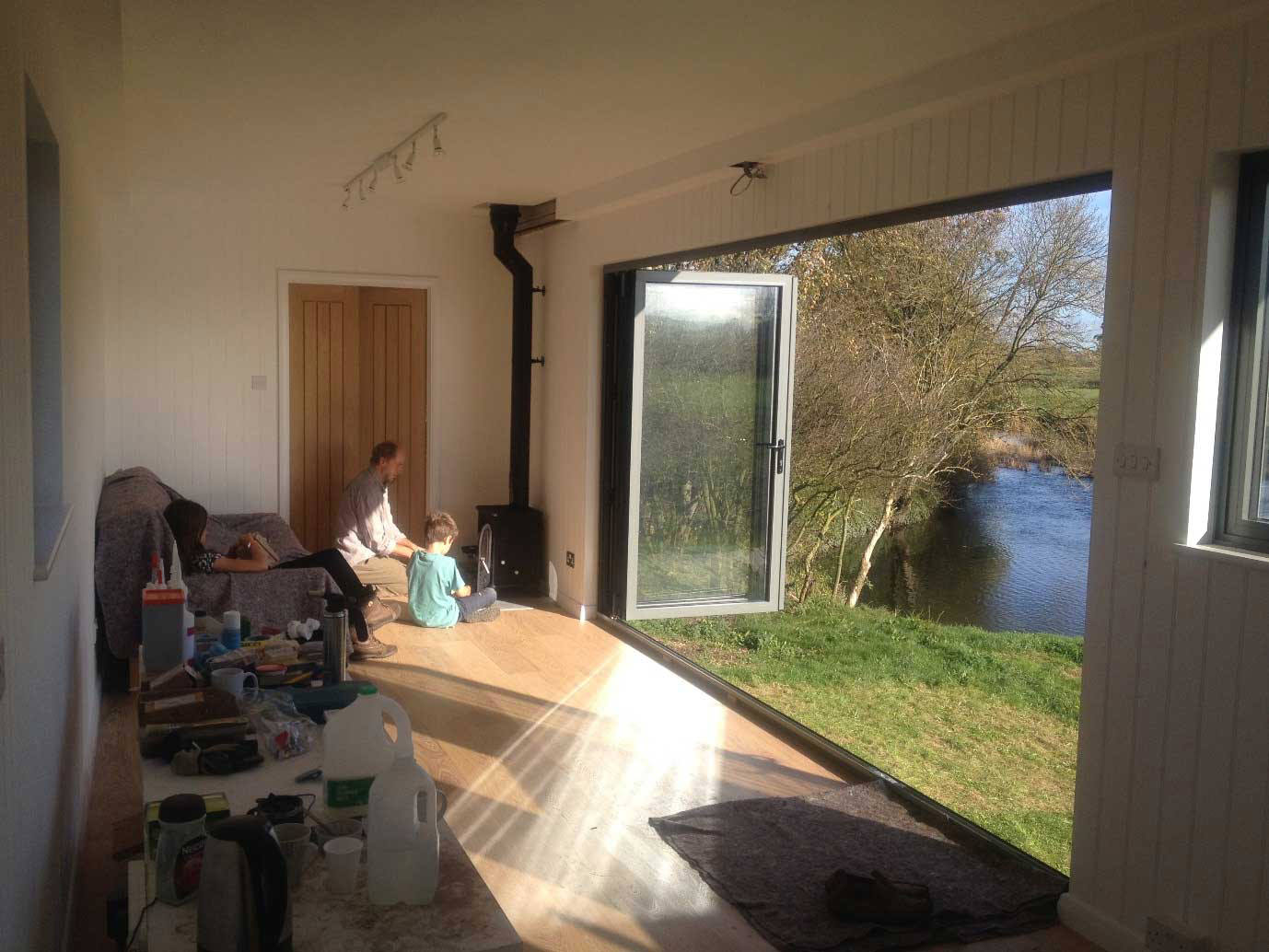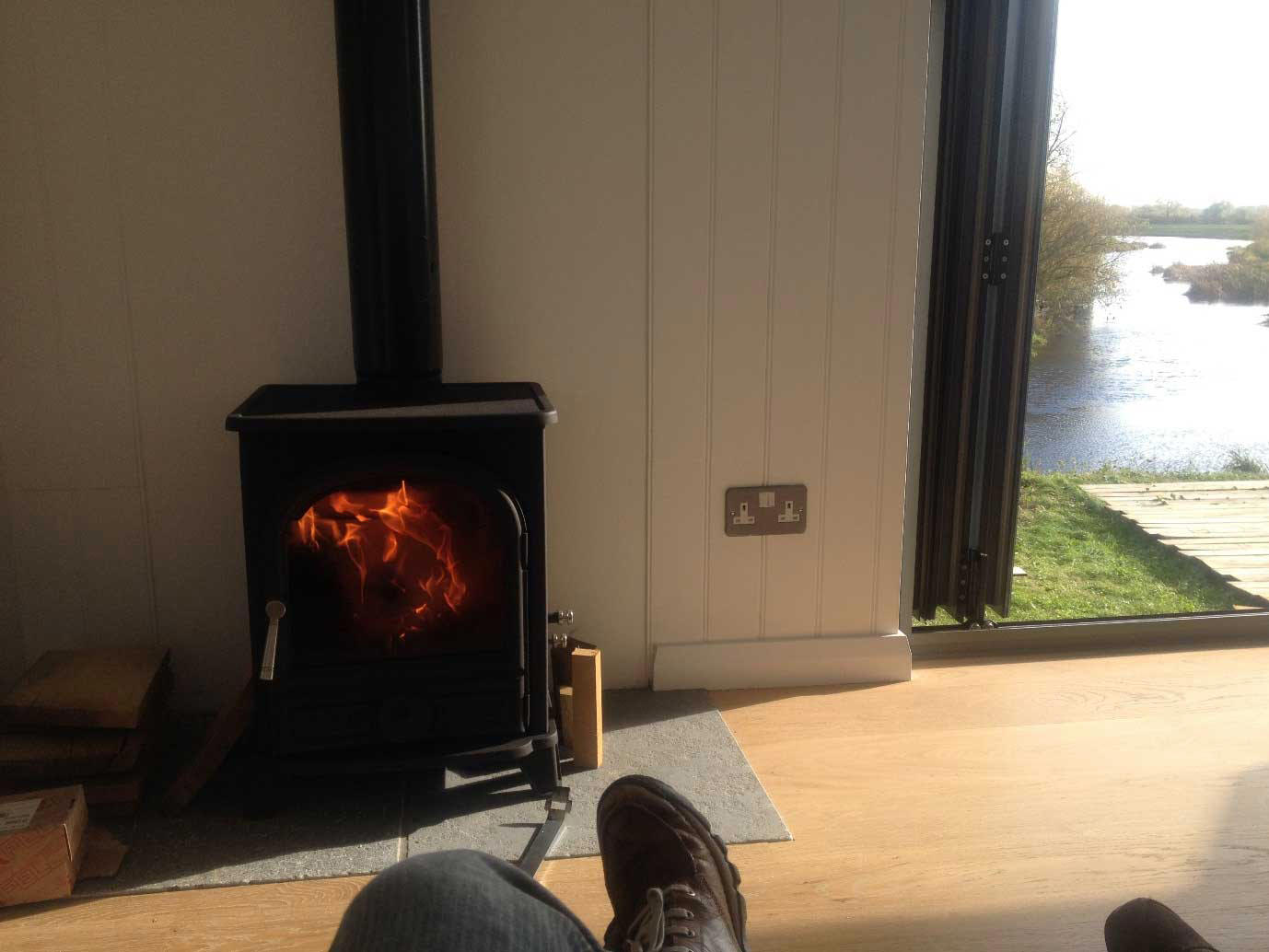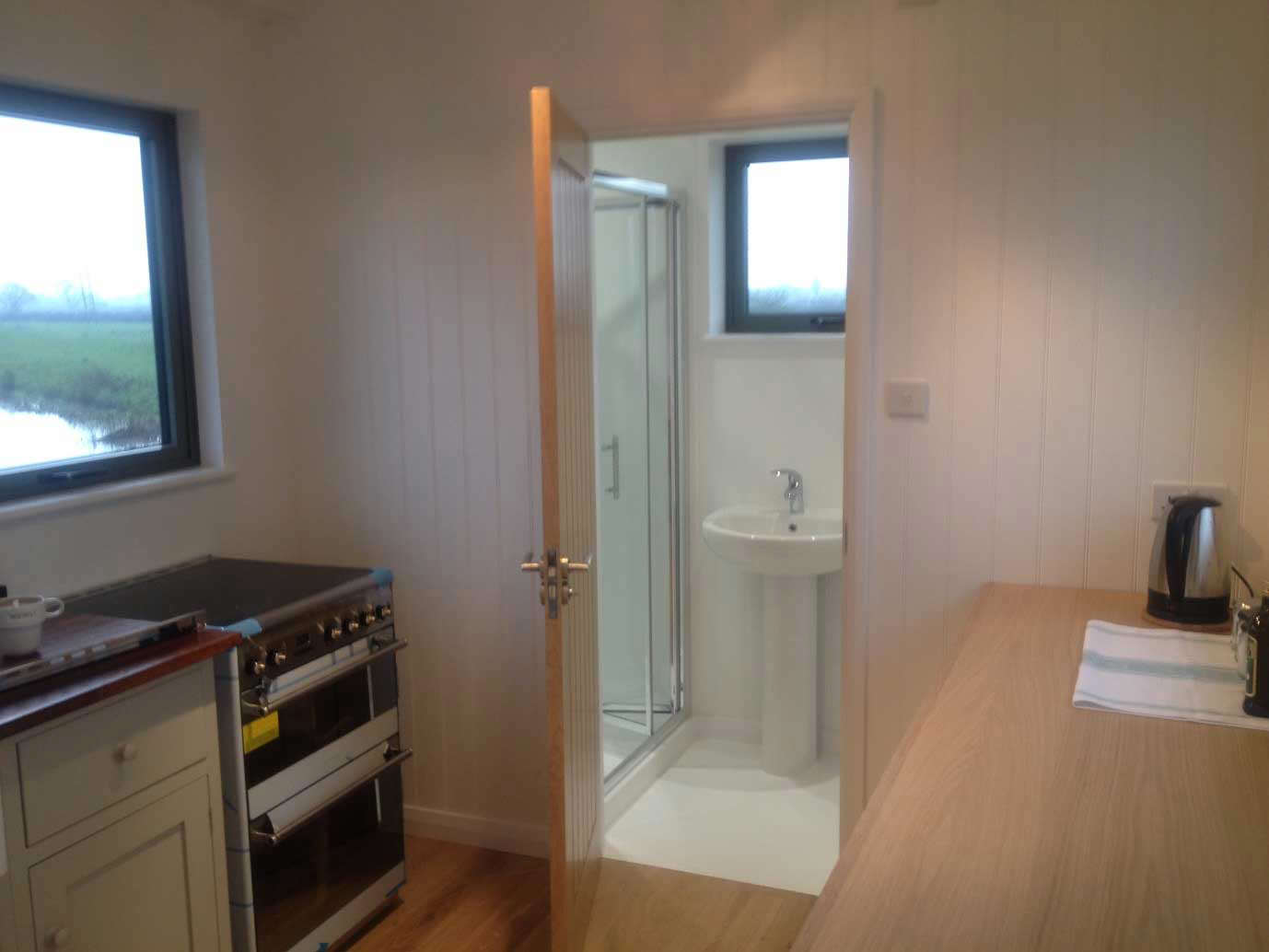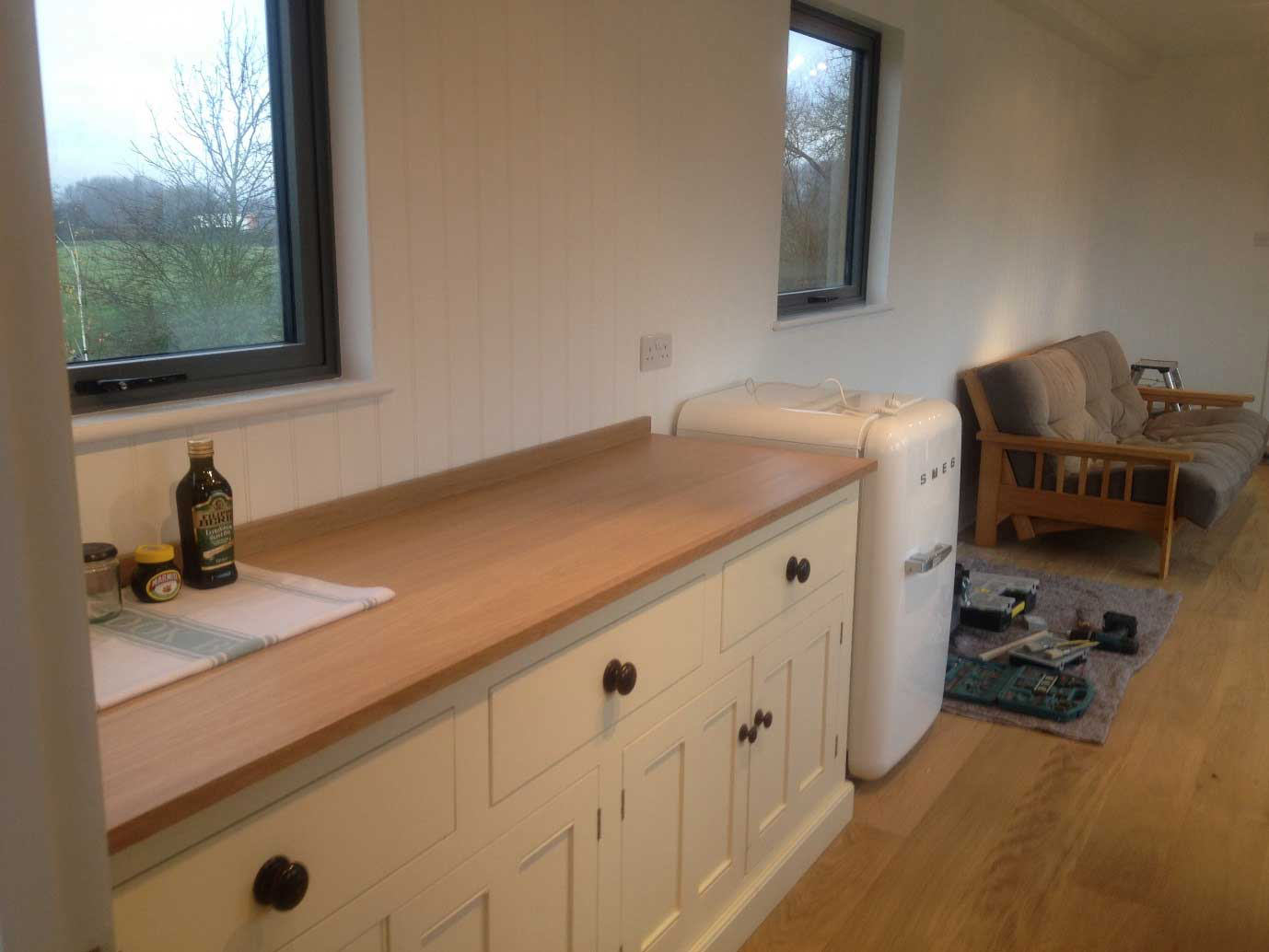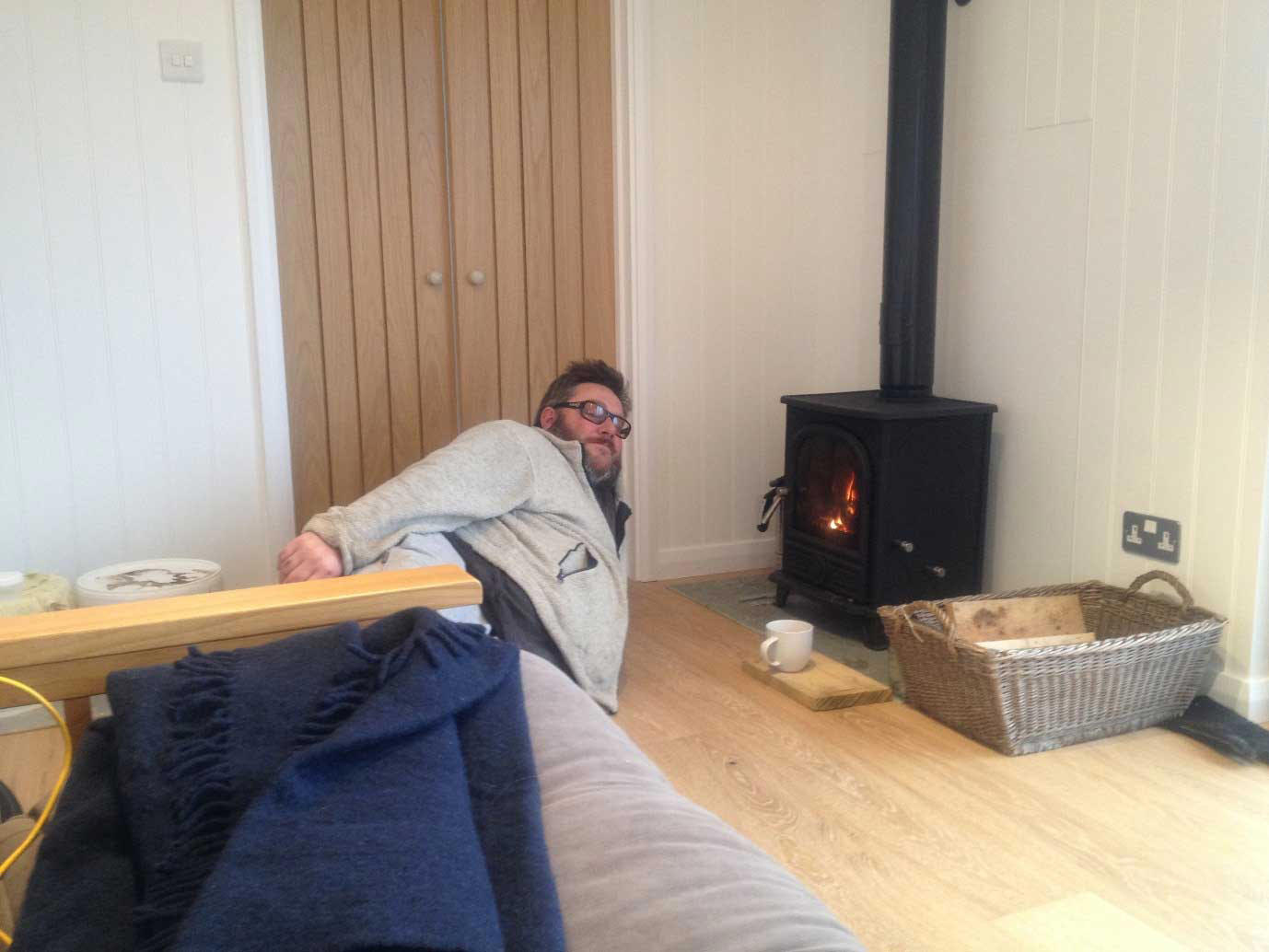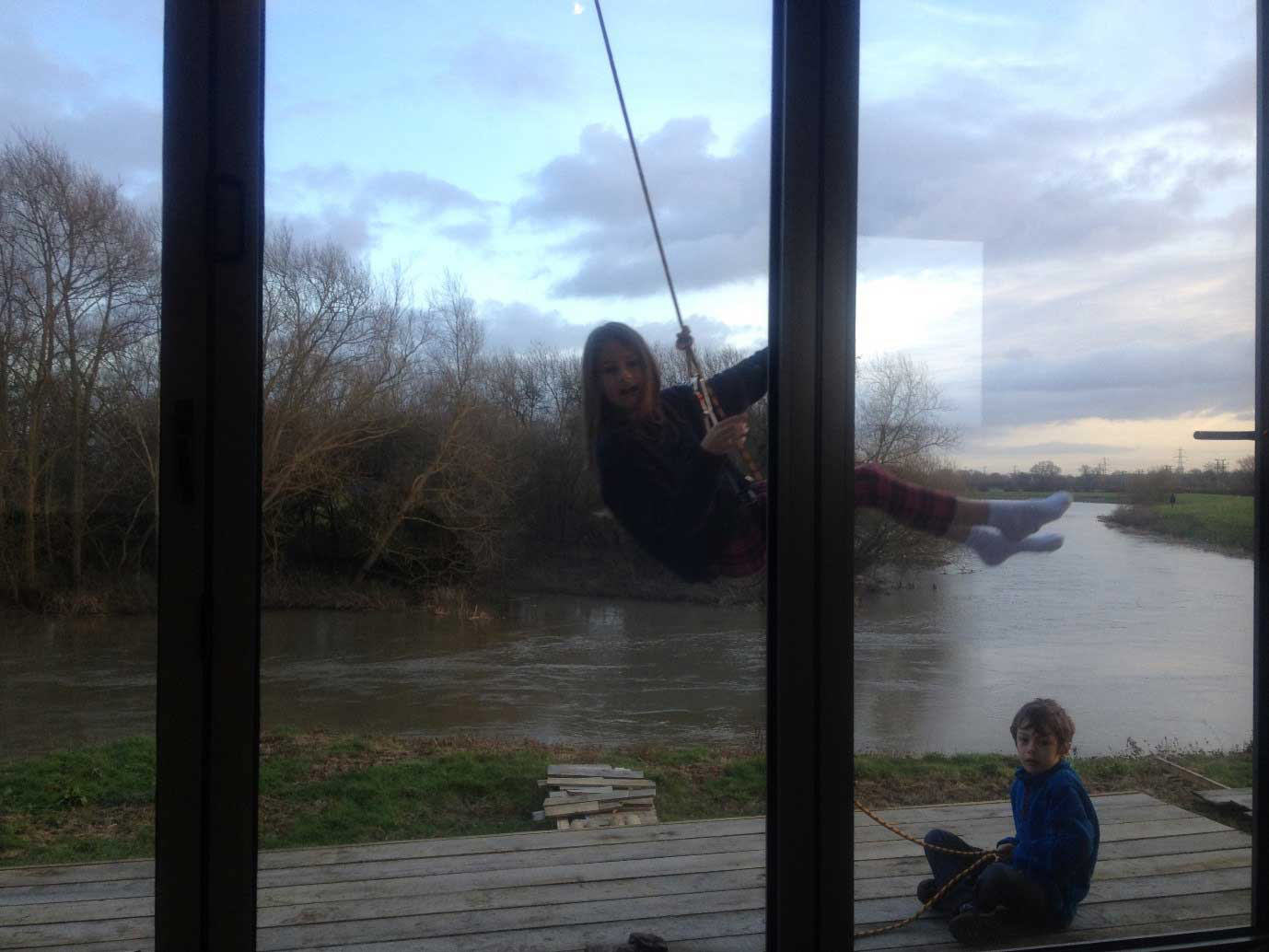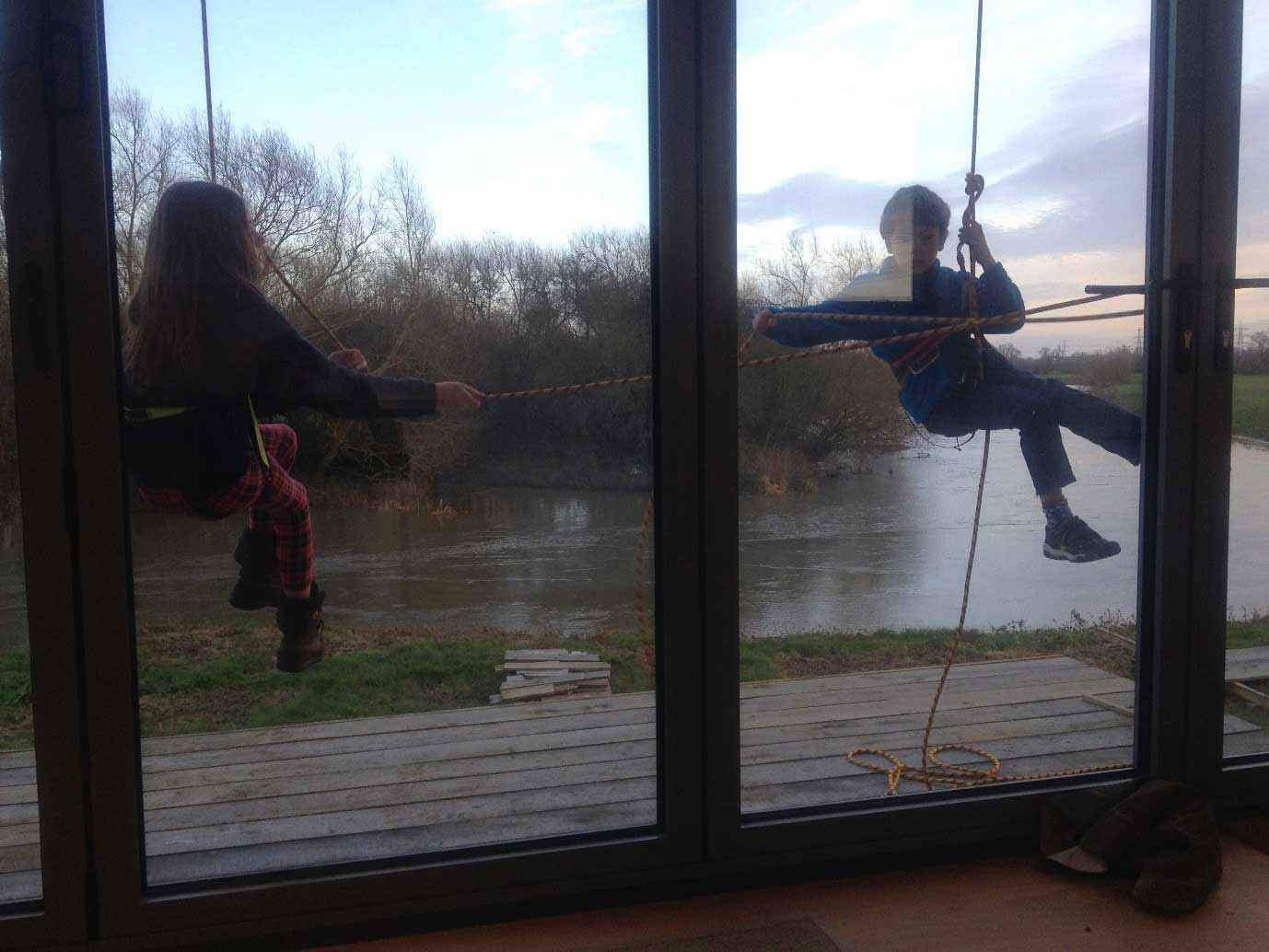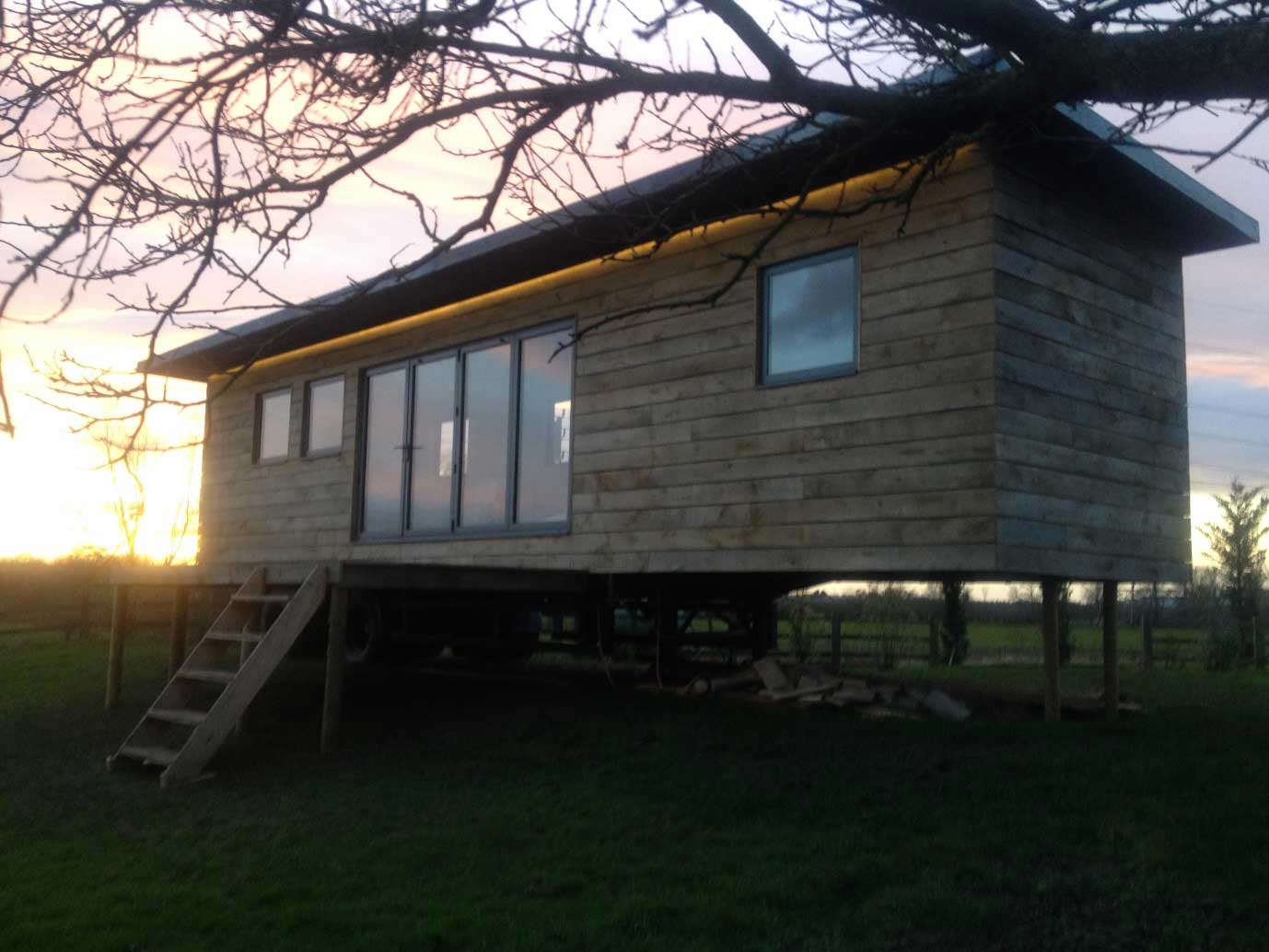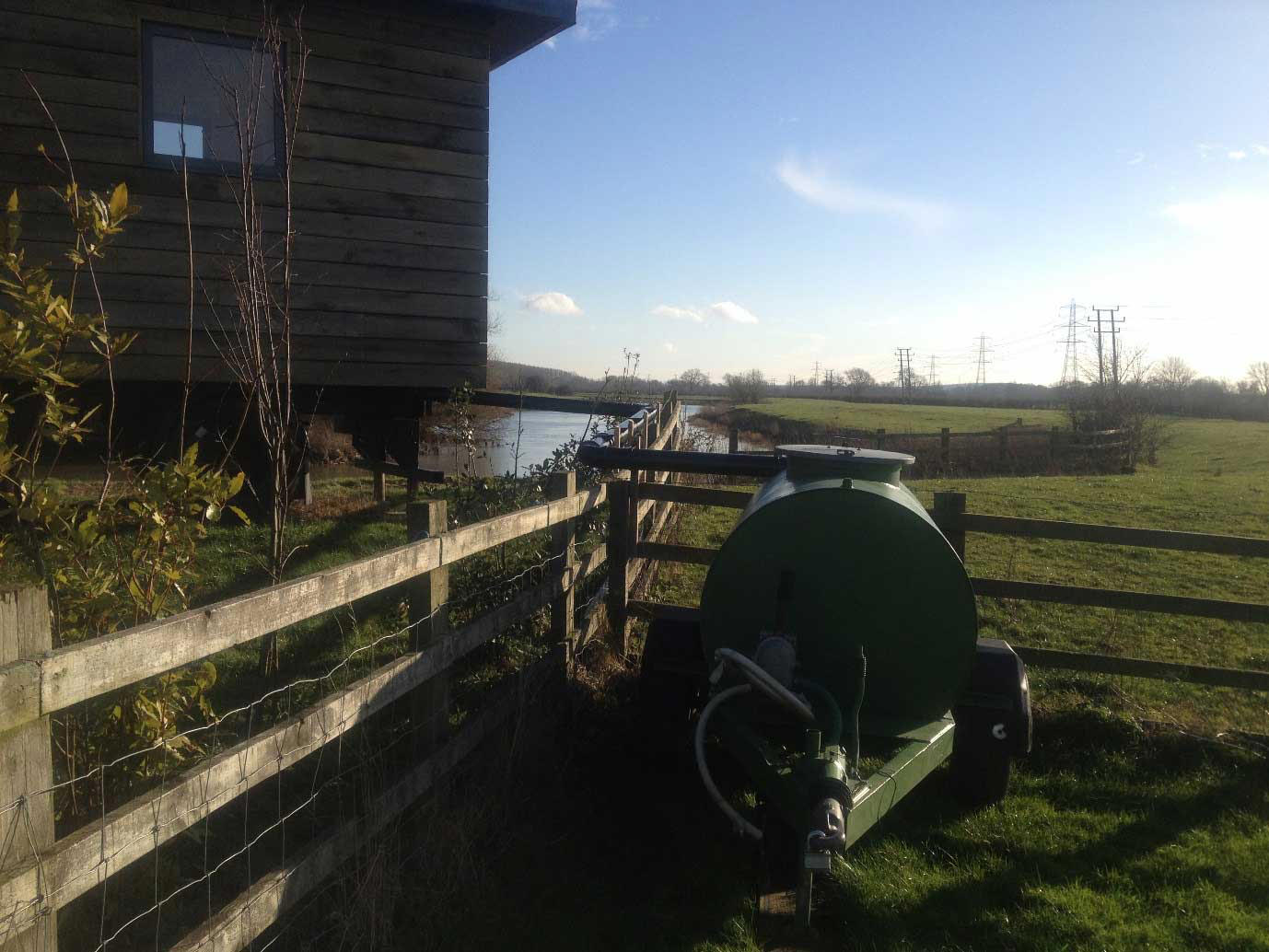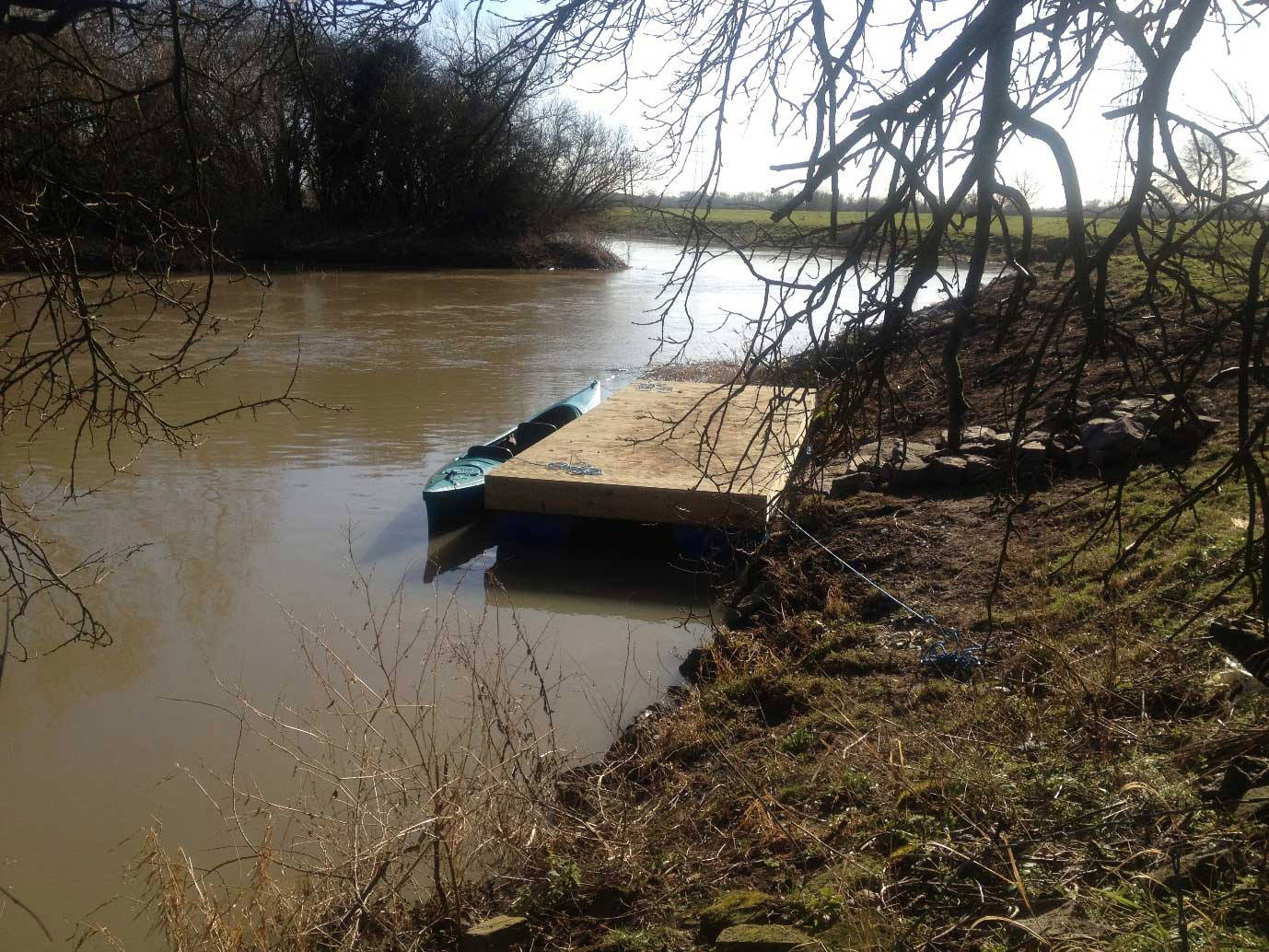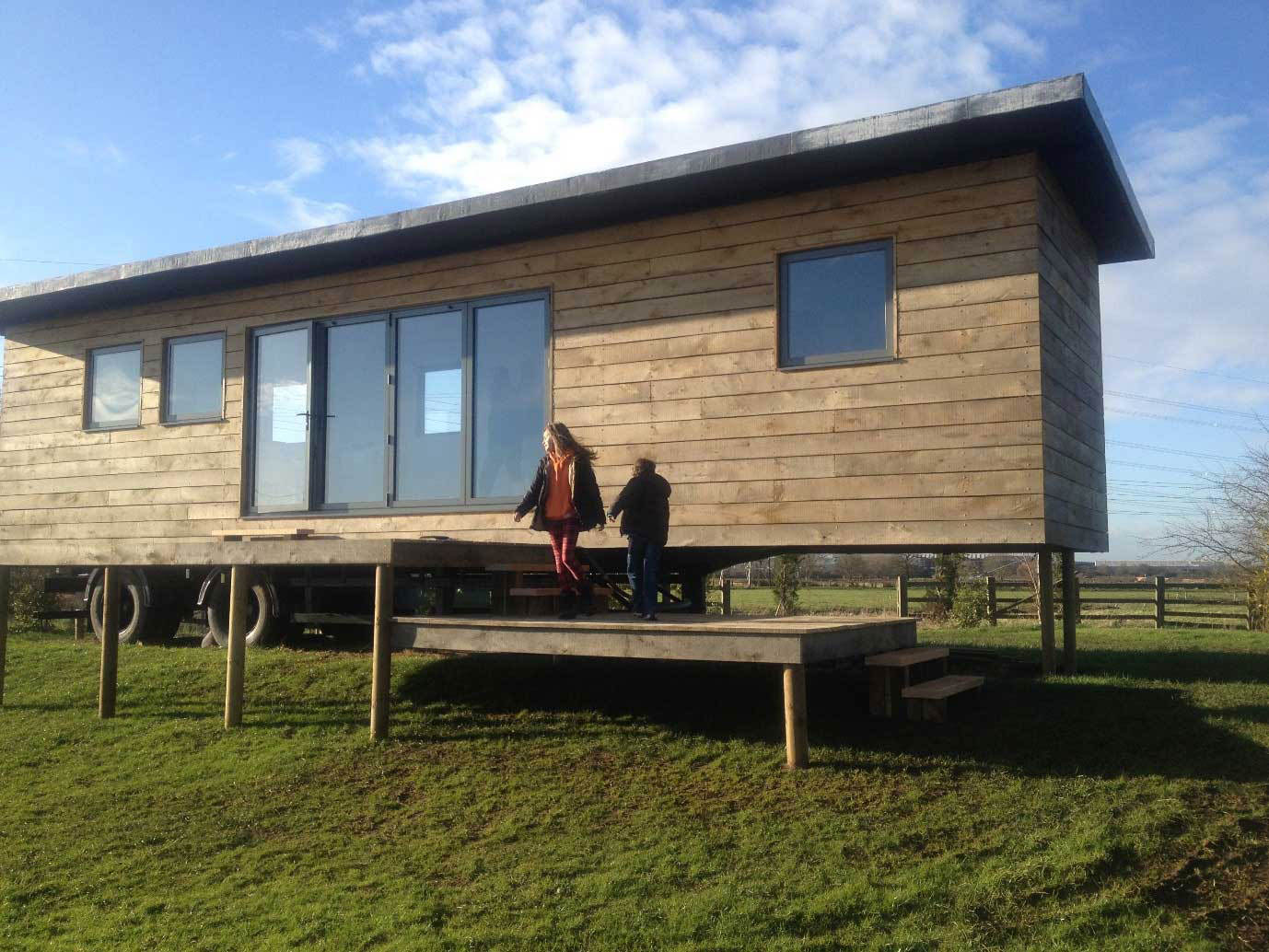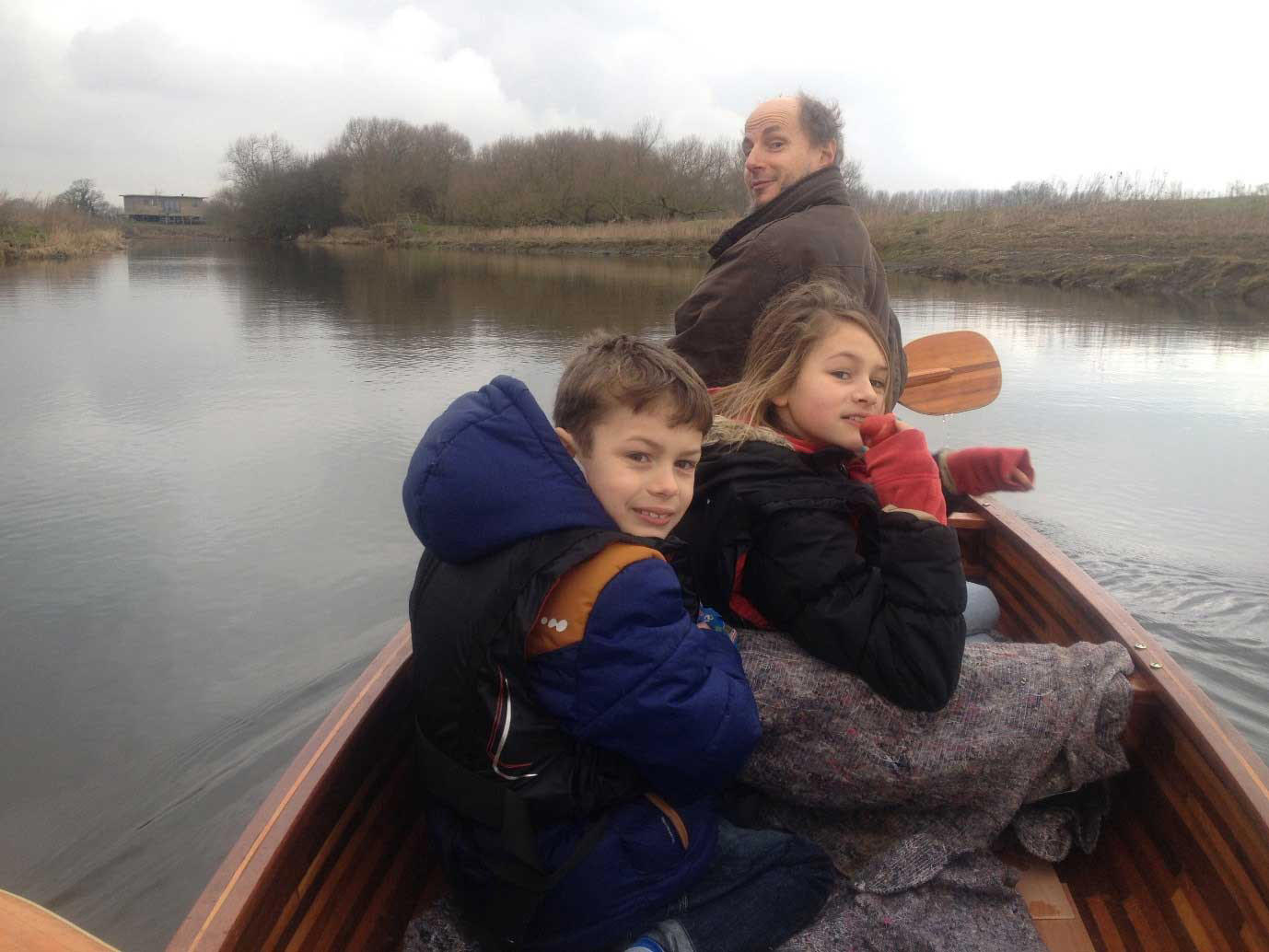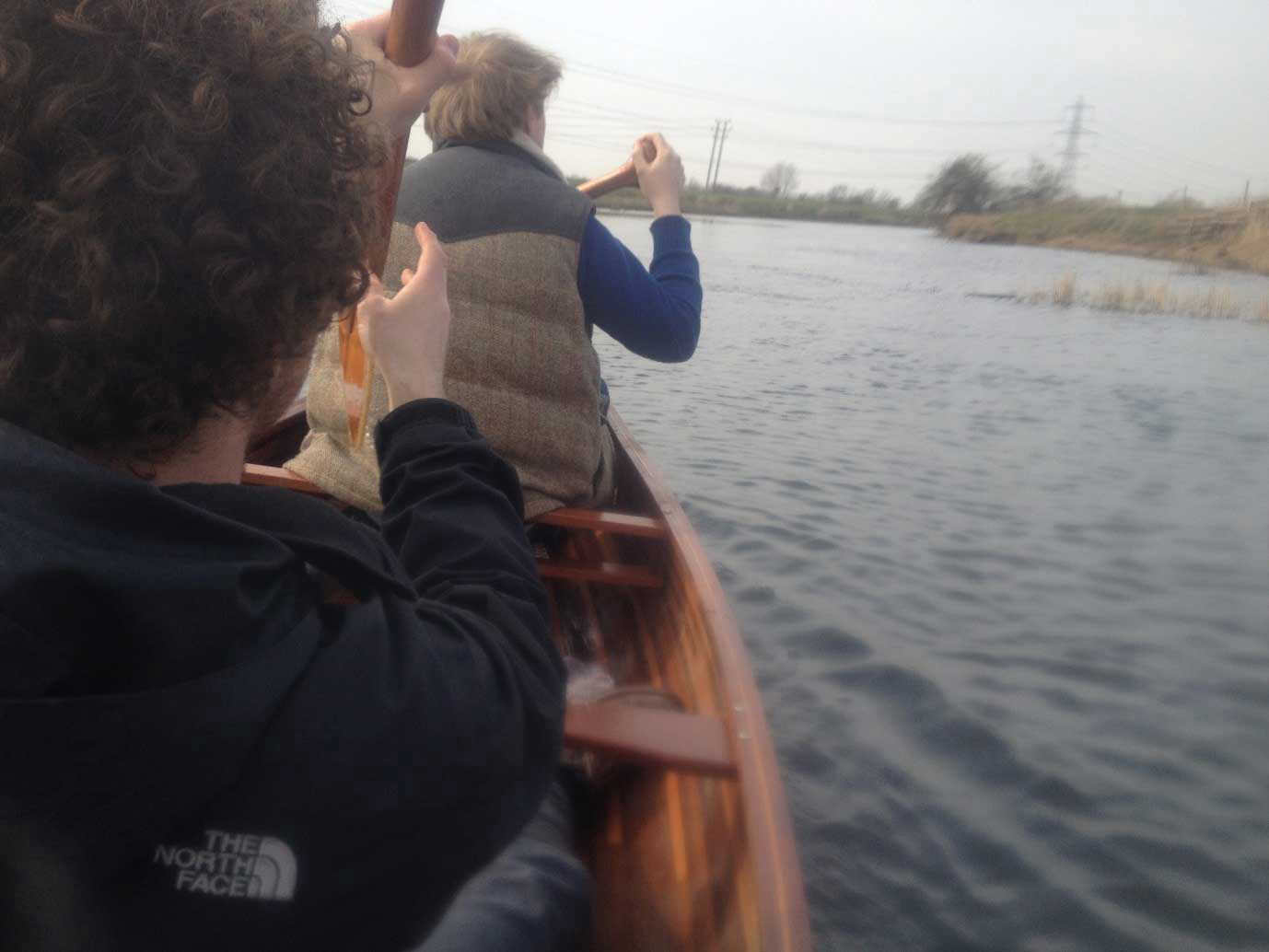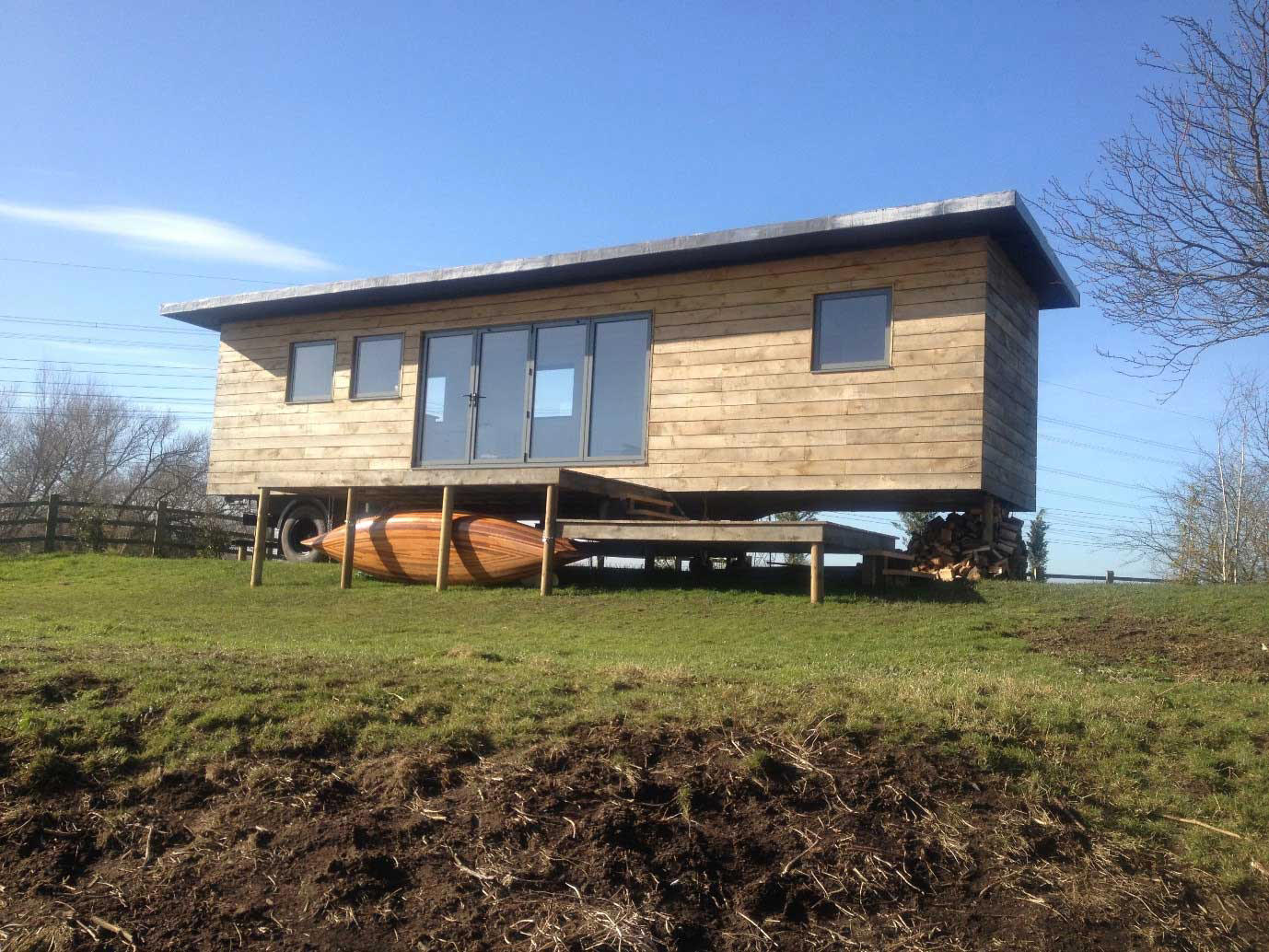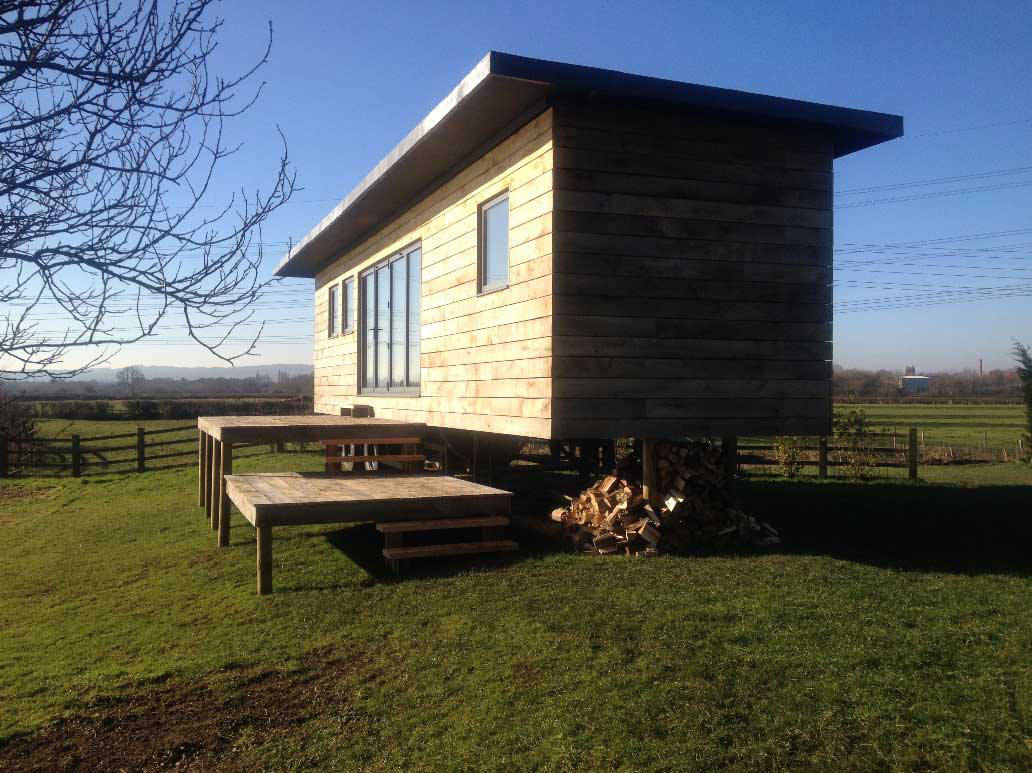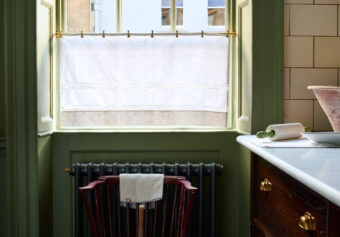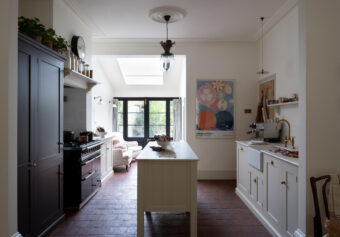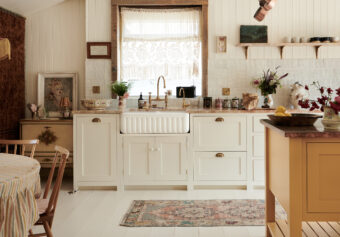My own private Idaho
24th March 2015
(£1300 delivered)
Own Private Idaho meaning: “living inside an Idaho potato”, or a very small space. Metaphorically, it refers to someone who is not paying attention because he is daydreaming, or under the influence, or otherwise wrapped up within his own very narrow sphere of interest or frame of reference.
I sold my old Hymer camper van, it was a wrench but I knew it made sense. Old campers will always be a love hate thing. The truth is, when it comes to weekends I’m lazy. I like to do easy stuff and my old Hymer was never easy.
When I bought the Mill, it felt like the perfect opportunity to create the perfect place for me and the kids to be. I had a hundred ideas and I am enjoying doing them all, one by one, with the help of me ol’ mucker Phil, he’s the deV of deVOL, Phil deVries, everyone should have one.
That ugly looking 40ft Curtain Sider was early on the bucket list, other early contenders were:
A peacock pen:
check
Making the side of the mill into a climbing wall:
check
A Cabin boat
check
A fleet of Kayaks and Canoes
check
We have enough boats for 20 carpenters and their kids to go marauding up the river to one of a number of Ale houses in Barrow on Soar and a return journey downriver by moonlight.
A Zip wire to the island……. Errrrm not yet, but soon.
A swimming pool for the kids and for practicing Eskimo rolls…..very soon.
By the way Robin can do an Eskimo roll without spilling a pint of beer! How can I compete with that!
Anyway, I could go on, but I want to write about my lorry trailer, because it’s one of those dreams that lots of people have and lots of TV programmes have been made about this primitive urge to build and live in a shed or a tree house or a bit off a plane. Not many people are lucky enough to have their own river to park whatever it might be by, so how could I not buy myself something, just to get started.
I thought about it one weekend and we asked around the nearby farmers and the next day visited this amazing, erudite, cheerful dairy farmer down the road and did the deal. I’m always in awe of farmers, they’re so….hands on and it’s not about the money money is it.
Well now I suppose I’d gone and done it, so it was going to happen, not just a fantasy now. The farmer fixed a dolly on his tractor and towed it round onto our lawn for us to strip it down.
Phil and Dean and Josh got to work with an angle grinder and some primer and in a couple of days it was looking a bit tidier.
As usual I didn’t have a proper plan; I just like to do the first bit and see how it looks. Once we got to here we decided that it would be silly to not use the metal frame, so we kept it generally together and called the farmer again to tow it to a site we’d prepared by the river.
You might already be wondering “What about the planning?”
Yes, well I was wondering about that too. I read every planning policy I could find and was pleased to find out that you can park up to 4 mobile homes in your garden. This was pretty much a mobile home, but there was a question as to whether this was a garden, but I figure that we have a Mill house and residents and it’s all on the same title.
I had a few back up plans too. Let’s say the Enforcement officer comes round and says “you can’t park that there”. Then I would say why not and he/she would have to show me some legislation backed up with the authority to enforce action. If that happened I could move it into the field, which is 20 yds away and on another title. Parking a mobile home in a field has different rules; you can only sleep in it for 28 days a year, but I thought that would still be ok.
There was another possible loophole I could use if necessary. This bit of land isn’t on any Title, well not as land anyway. It used to be part of the Mill race until the Environment Agency built the flood defences and filled in this 50 yd stretch. So as far as the Title was concerned this is our pond, so this is errr….. a boat? I was pretty sure there wasn’t a rule anyone could find for this particular scenario.
Who knows, but it was all vague enough to give it a go.
The Farmer manoeuvred it through our orchard, which required some severe lopping, then up the flood defence bank and on to our 6 paving slabs. Going up the bank and seeing the twist in the hardwood bed made me realise that any half decent movable house has to flex, so plaster-board, tiles and grout were out.
We did draw up a plan for the cabin, it would have a shower room/loo at one end, a small bedroom at the other end and a kitchen/lounge in the middle, which would have sliding glazed doors on the river side. I didn’t settle on a final plan, or even the position of the windows. I thought that, once I was standing in the truck when it was parked in its spot, I would know for sure the best views and the best place for the windows and the layout of the kitchen and furniture and the best place for a wood-burner. In the meantime we just had to get started on the must haves, like a floor and a roof.
Basically we bought a shed load of 6”x 2” and got started. Here’s Phil screwing some noggins into the floor frame. We made the floor about 9” wider than the lorry bed on each side. If you don’t overhang the sides by more than a foot and if the total width is no more than 2.9m (9 and half foot) you can move it by road without having to inform the police.
The slider rails that held the lorry curtains running on each side were sagging a bit, so we wedged in a couple of bits of 6”x 2” to keep it up and started on the roof. We decided on a slight angle, so water would drip off the back side of the cabin without guttering and downpipes making it look too housey. We were unsure about the roof material and finish, toying with turf, sedum, lead, but in the end opting for ply and rubber. We’d used rubber to line some box guttering for the mill and it was so easy and it comes on a roll that’s wide enough and long enough to do the roof in one piece; easy.
I was keen to keep it minimal and rational with every decision based on function, cost and ease of fit.
Phil, Josh and Dean had the roof structure together in a day.
The ply was screwed down and here’s Phil slicing off the edges with a circular saw.
I decided to go for a big overhang on the roof to keep the weather off the cladding, which meant that it would need an abnormal load permission if we towed it again, but to be honest, by the time the roof was on, we were so in love with it, we knew it would always be here at the mill in one spot or other. I just love making spaces; as it comes together you are drip fed with excitement and the realisation of how it will be, how it will feel to be in it, looking out. The roof getting covered, felt like a big step, now you could stand on the joists with a ceiling above and see the view of the river stretching ahead, framed.
The kids loved it taking shape too. When we were out on the boat, it looked quite impressive perched on the bank and we imagined how lovely it would be when we could sit in it having crumpets and endless cups of tea in all weathers. In the picture above, it’s got the rubber glued down onto the ply roof and we have got one end studded out with a window for the bathroom end. The scaffolding and a big flat roof became a huge climbing frame. Standing on the roof gave you a broader view of the river and the fields around, but if the wind was blowing or you started it rocking, it was really wobbly. It needed some stabilisers. We realised later that the tyres would suffer too if they took all the weight and didn’t rotate, so it was eventually jacked up and props were slotted under the ends. Then it was sturdy.
Joseph, during loom band mania, looking cool on the river.
The kid’s faces go all serious on the boat, especially when they are steering!
The studwork was lined with membrane, then roofing laths and O.S.B board. It happened in no time and all of a sudden it looked solid. We cut the holes for the windows, just to make sure we liked all the views from the inside and it had the look I’d imagined on the outside. I liked its boxyness, it was the opposite of decorative.
One morning I came to cotes Mill from the other direction and was shocked to see how this big orange box jumped out of the countryside from half a mile away. If I was hoping the council would let it go, this orangyness was likely to make the planning department see red.
We bought a couple of shades of green and painted the back green that morning.
It didn’t look great, a bit like a bunker, but from the road, it disappeared into the trees that rose behind it on our island. It’s a funny process, even though you’ve weighed up the rules and the possible consequences, you can’t help feeling naughty, like you’re going to be told off by the headmaster. I don’t mind testing limits, I’m definitely not a play it safe kind of person. This has led to many mistakes, but no regrets. Too many people spend their lives worrying about what could go wrong and end up doing nothing special at all. The things that I’ve done that have been the boldest have also been the best; like buying Cotes Mill in the depths of recession. It was a once in a lifetime opportunity and not for the faint hearted, but it may have been the best decision of my life. I also take life one year at a time, never imagining that something will have to wait; if it feels right, do it and do it now. That’s not advice, it’s just how I think.
We ordered the windows and doors in mousey grey (not like in the picture, that’s the vinyl wrapping) and I wanted them simple; all windows square, all doors door shape, no glazing bars, Georgian panes, nothing extra. Everything the same makes things cheaper too. The glazing is the biggest cost, over 5k; more than the rubber roof, 2k, more than the oak cladding, 4k.
Once you start fitting the windows, you take another leap forward in feeling how it will be. There’s an inside and an outside, there’s shelter, there’s rain drops fiddling their way down panes. All good things.
We left the green oak boards on bearers, all laid out on the grass, being rained on, drying and bleaching in the sun, over and over for 3 months; and walked on by foxes I think. I like green oak when it’s freshly sawn and when it’s weathered and silvery, but I hate it when it’s half way there; especially when that takes 20 years. Some oak inevitably gets washed and dried all the time, whilst other parts don’t, like under the eaves of a green oak porch, so you have tannin stains half way down. We’re all pretending that that’s authentic; it might be, but it’s also ugly. With the big overhang on the roof, the top boards would get no weathering, so I needed to, at least, part weather them before they were fitted.
The boards started going on and suddenly our trailer started looking less like a bunker and a bit more like a cabin. We also lined the edge of the roof with lead, it seemed a sensible and reassuring material to sit with the oak.
It was a long way up, so we knocked up some temporary steps, while we considered the decking, how big should it be, how permanent or movable should it be?
Our digger man (£160 per day including his digger and diesel) dug a trench 300 yards long, from the mill to the cabin and laid in a water pipe and power cable.
Every weekend, we’d hang out at the cabin, we could now make tea!
If there’s a game to be found, we’ll find it. The oak boards became temporary see saws and the water on tap meant hours of fun drenching the kids on a sunny day.
The interior was coming along, we used tongue and groove on the wall and cheap clip together flooring on the ceiling, and, instead of tiles in the shower, we used Corian. Everything was designed to take movement. Best of all, Phil fitted the wood-burner and we had plenty of off cuts to burn. As summer turned to autumn, the cabin proved to be very warm and cosy. All the stud walls, the ceiling and floor all had rockwool slotted in and when the sun shone through those doors the cabin heated up fast.
Just glorious, a flaming wood-burner and the Soar with its ever changing character rolling towards you. Sometimes its grey and flat and other times its rippled and sparkly with eddies everywhere. The water birds are hilarious and fascinating. There’s no more peaceful place to be.
Pristine Corian bathroom
Some old deVOL furniture robbed from our offices in Loughborough did for a kitchen
Sago (drinking buddy, Lord Beaumont Leys) making himself at home.
Tie a climbing rope to the back side of the lorry trailer, sling it over the roof and Poppy can hang around all day. Joseph makes a willing punkawallah for a while.
Or sling two ropes over and watch them get in a tangle, better than telly.
Strip LED lights hidden behind oak cloaking strip; no I’m not sure about them either, bit flash? Maybe I’ll look out for some old lanterns or bulkhead lights.
Ex Army water bowser from ebay, perfect for waste water and effluent. We have two Septic tanks at the mill, one which is pumped out every two weeks, so when the bowser’s full, we tow it over when the septic tank man is coming. So far the bowser’s only needed emptying once in a few months of weekend use.
Pontoon made from 6 x 200 litre Ribena barrels, ebay £15 each and some decking and a bit of 6” x 2” of course and tied up: one of our fleet of Kayaks ready for instant paddling fun. A pontoon is a simple thing, but it’s such a giggle, you can sit a deck chair on it, have a cuppa and you’re right down on the water with the birds. You can mount the outboard on it and motor up river. You can string a rope to the island and use it as a ferry. Sago told me that if you drill a hole in the bottom of each barrel it will be really stable, as the water that goes in is ballast and it will be under pressure and the compressed air above will provide the same lift. It’s a head scratcher, but it does actually make sense.
The deck developed piecemeal; first we just did enough to span the sliding doors, then we used the rest of the green oak to create a second level. My mum has bad knees and I really want her to be able to make the steps. On a previous visit Mum took one look at the makeshift steps and turned round and headed back to the car, so I have tried to make it look easy to get up to and made the steps long and shallow. The kids love platforms, as soon as you add something new they want to be on it doing a little dance and pushing each other off. We hadn’t got the posts quite straight at this point, but I’d already decided that seeing under the cabin was important. I also thought that seeing the lorry wheels was important too. It’s funny, it’s a good story, I take people up to see it and they love it, not because it’s a beautiful building, because it isn’t, it’s just basic and honest; but you love it because it’s a box on a lorry trailer and the idea of a house that moves is its beauty. It didn’t feel right to pretend it was anything other than what it was. So the gnarly old wheels and mud guards are there to be seen.
After 4 months of getting on with it, the Planning enforcement officer finally paid us a visit. The planning department and the listed building people are being nice to us, when they said no the other day to our recent application for a new workshop in the field, they apologised first; I like that. They love what we’ve done with the mill. It was vacant for 6 years and we have saved it; it’s a hive of activity now, with hundreds of visitors every week and looking better than it has in its 1000 year history. But, the Enforcement officer couldn’t ignore every person in the department saying one by one, have you seen what they’re doing at Cotes mill with that there cabin.
I missed her, but when she visited, Robin took her up to the cabin and pointed out the wheels. She noted the water and electric supply and said she’d have to check to see what rules we may be infringing. That was four months ago, so maybe, like me, she can’t find anything that says you can’t do this.
On our way back to the cabin (in the distance), middle of winter, we’re still out on the river at every opportunity. Just look at those faces, lovely people loving the water. You may have noticed something else lovely in the picture, the handmade wooden canoe, maybe from Sapele wood. I’d love to say I made it, but I didn’t; you guessed it: ebay, £406, maybe my best ebay purchase to date. This is a boat designed for gentle great lakes canoeing, we have rocks and rapids, so the running repairs are already underway, but we’re pretty well placed to repair and improve. It’ll get an aluminium cover on the leading edge, which has already taken a hammering. One paddle has already been glued up after Phil and I attempted getting up the rapids.
Here is our product designer from our London office, Ben Flannaghan and at the front, you might have heard of him, Sebastian Cox, who has become well known for his use of coppiced timber. We are working on a collaborative kitchen range together that will bring Seb’s love of sustainably grown British timber to the kitchen market. Our lunch was delivered by The Lunchbox and I said, get your coats I have a surprise. We walked up to the pontoon, the canoe was ready to go. We paddled up to the weir, dropped anchor and had our chilli and chips on the water surrounded by ducks and swans and Canadian and Egyptian geese and moor hens and herons. It was officially Sebs best lunch break ever.
And here’s where we are now, ready for a beautiful action packed summer. We are pitching a Yurt on the bank in front of the cabin for an O’Leary get together in May. Maybe I’ll get the zip line to the island from the cabin roof by then.
What did it cost? 30k. What do I think about the design and how it looks? Well, I like what it does, I like what it gives us; so I love it. But, it will get some style, sometime this summer. We’ll pitch the yurt and consider the two together; if it needs something more, I’ll get Helen to style it, I know my limits.

